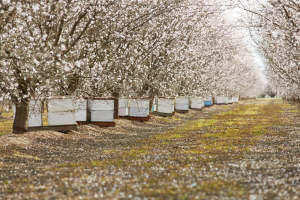Click Here if you listened. We’re trying to gauge interest so only one question is required; however, there is a spot for feedback!
Read along below!
 The Quiet Evolution of Apiary Mowing
The Quiet Evolution of Apiary Mowing
A Necessary Aspect of Apiary Management
By: James E. Tew
My First Real Job
When I was a young teenager, a friend and I would push our mowers around the community and offer to cut grass. We generally earned somewhere between $1.75-2.50 per yard total. We had to split the earnings. The mowers were not self-propelled. Consequently, as young entrepreneurs, we never had a body weight problem.
We developed a regular customer list and at our peak, we were cutting about twenty lawns per week. General expectations were that we cut in straight lines and tips were not offered. When we were thirsty, we drank water from faucets plumbed from the house. Dad provided the mower and the gas, but I was allowed to keep my earnings. Of course, he got his lawn cut for free.
To this day, I cut grass in bullet-straight lines, and I only mow when the lawn absolutely needs it. Now, throughout every Summer month, I marvel at the equipment that professional mowing services have and I compare all that modern equipment to the absolute minimal equipment that my friend and I used all those years ago. Times change, don’t they?
Before Gasoline Mowers
Before gasoline mowers became widely available, lawns were cut using various manual methods and tools. The common methods used for lawn maintenance before gasoline mowers were scythes, sickles, weed slings, grazing animals, manual push mowers and scissors. None of these options were feasible without manual labor. Even grazing animals required fence installation. The invention of gasoline-powered mowers modernized lawn care and made it much more efficient and accessible for homeowners, landscapers and even beekeepers.
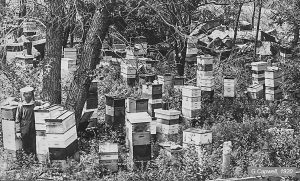
Figure 1. A Kansas beeyard in 1920. Note beekeeper in the lower left of the photo who is wearing a vintage Alexander veil and gauntlet gloves.
What Did this Mean for Apiaries?
It means that our apiaries, decades ago were weedier, and more unkempt by today’s standards. I cannot find information indicating that grazing animals were common methods for foliage management in pre-mower days. No doubt, cows, horses and sheep would occasionally knock over hives or scratch against them.
In the past, all apiary grass and weeds were cut manually requiring hot labor commitments. I’m old enough to remember life before string trimmers and herbicides. Everything was weedier then.
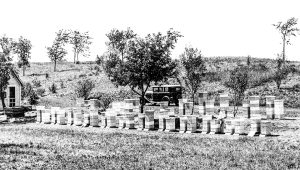
Figure 2. In 1922, in this Iowa beeyard, all grass was cut using manual methods. Gasoline mowers, of the day, were heavy and uncommon.
To Add to the Laborious Task
In years past, just as the present, protective bee gear was commonly worn when cutting and pruning near bee hives. Wearing protective equipment was just as clumsy now as it was years ago. The requirement to wear protective clothing has always made apiary weed control a hot, tiring job. Thankfully, modern protective equipment is better ventilated and more comfortable, but it is still hot work.
No-Mow May
Due to my early years of incessantly cutting grass, as a senior citizen, I am now a reluctant lawn mower. To the chagrin of my neighbors whose lawns are always neatly manicured, I only mow when I must. In this way, I avoid needless mowing sessions and my bees have access to the clover and dandelions in my lawn.
When I first heard of the concept, I readily embraced the notion of a “No-Mow May” in which we just give our lawns a month off from trimming. I quickly found out that a mow-less May lead me directly into a hellish June, with tall grass that frequently required raking after cutting. I had to go back to the lawn maintenance drawing board.
String Trimmers in the Apiary
I don’t remember the first time I used a string trimmer. With my mowing history that I touted before, that memory void seems strange to me. But I do know that a string trimmer became a necessary component of the equipment that always went with me to an outyard. String trimmers are now a common, if unexciting, beeyard management tool. What’s their story?
A Short History of String Trimmers
The history of string trimmers, also known as weed whackers, weed eaters or line trimmers, dates to the early 1970s. The concept of using a rotating nylon string to trim grass and weeds emerged as an alternative to traditional lawn mowers and manual cutting tools.
The concept of a rotating nylon line for cutting vegetation was developed in the late 1960s by George Ballas, a Houston-based entrepreneur. He got the idea while watching the revolving brushes at a car wash (I find this interesting. The common safety razor was envisioned after a visionary watched a woodworker use a common hand plane. The flail honey comb uncapper was conceptualized as another visionary watched the conveyor belt perform at a grocery store checkout. Shouldn’t we all be more observant?). In 1971, he received a patent for his invention, which consisted of a fishing reel with fishing line attached to the spool. Ballas’ invention was the foundation for the modern string trimmer.
In 1972, George Ballas partnered with Jim Goad, an engineer, to refine the design and create the first commercial string trimmer. They established the Weed Eater company and introduced the first gas-powered, handheld string trimmer to the market. This model quickly gained popularity due to its effectiveness in trimming grass and weeds in hard-to-reach areas.
In the late 1970s and early 1980s, electric string trimmers began to appear on the market. These models were lighter and quieter than their gas-powered counterparts, making them more appealing to homeowners with smaller yards.
Bees and Trimmers
No matter how useful power mowers and trimmers may be, on some mowing days, the bees seem to despise them. Most experienced beekeepers have seen this defensive behavior. In fact, common management recommendations warn the beekeeper to expect this attack. It is thought that the odors and vibrations from the mowers and trimmers agitate the bees.
In my own experience gained when trimming around hives, it seems that the bee response is greatest during Summer months when a nectar dearth has ended and the colonies are at full populations.
I have never used a battery-powered trimmer, but I am sure some of you have. I ask if you have noticed less of a response when using battery-powered mowers and trimmers? Does their quietness and lack of fumes have a more lenient effect on the colonies?
Beekeepers and Trimmers
At this moment, I have two, hand-held string trimmers. I have one modified with a cutting blade for heavy or tough growth. Brambles, such as multiflora rose, are a challenge for either type of cutting head.
Even though I frequently use them, I increasingly have issues with string trimmers. The evolving issue is that the older I become, my trimming sessions grow shorter and shorter. My shoulders ache. I get noise warnings from my Apple watch. I get hotter and hotter in the protective gear that I must wear. I simply can’t do the job the way I once could.
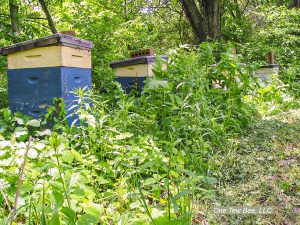
Figure 3. An apiary with uncontrolled grass growth.
Consequently, I have grown to dread the task more and more. All the while, the grass and weeds have continued to grow. Out of necessity, I developed a tolerant attitude of tall grasses and weeds in my apiary. I put my hives on firm hive stands that were twenty inches from the ground and I kept the entrance free of tall weeds. Even then, the grass and weeds in my beeyard continued to grow. My bees seemed unphased by the tall grass in the yards, but increasingly, it became apparent that this approach could not last. Why?
Two reasons that altered my laissez-faire system of yard maintenance evolved. The first reason was you, the reader of Bee Culture articles. Photos and videos that I captured in my apiary looked terrible. For instance, while I wanted to write about a new swarm that I just acquired, my photo of the new bee hive was marred by tall grass and the appearance of a generally unmanaged area. (If you have back issues of Bee Culture, you can readily see these photos.) I grew afraid that you, the reader, would not understand the bigger picture.
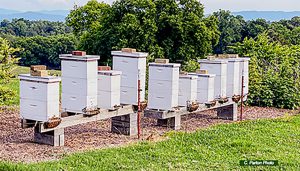
Figure 4. A manicured yard that uses herbicides, grazing animals and electric fencing to keeps foliage at bay. C. Parton Photo
Secondly, the tall weeds made it difficult for me walk while carrying a super of honey or other related bee equipment. Briars tugged at my suit. Tall grass made me stumble as I walked. Grass grew in and around my unused equipment. As with the No-Mow May scenario that I discussed earlier, I had to return to the drawing board. I was physically unable to trim my entire beeyard with a string trimmer and it was too much to ask of my 1972 Snapper push mower to systematically mow this tall grass.
A Heavy Duty, Walk-Behind Trimmer
I would occasionally see advertisements for various models of walk-behind trimmers. I asked around my circle of beekeeping friends, but no one had experience with these machines. I checked online. Yes, wheel kits were available for my string trimmers. In theory, I could modify my handheld trimmers to be mobile. Again, I asked around my circle of beekeeping friends, but no one had experience with these wheel kits either. All the while, the grass continued to grow. Would a trimmer on wheels allow me to work longer and more consistently?
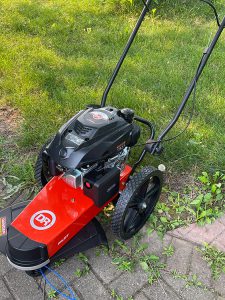
Figure 5. A walk-behind Cord Trimmer.
In mid-July, with apiary grass higher than my knees, I broke. This situation in my apiary was unacceptable and was never going to get better. I went to an equipment dealer to buy a wheel kit. They did not have one, but they did have a single walk-behind trimmer on the showroom floor. It was $400. I bought it on the spot. It uses four .175” spiral cutting cords and cuts a twenty-two-inch swatch. It cuts at five heights – from 1.5” to 3.5”. I set it to the highest setting. The machine fairly easily chewed through the tall weeds leaving me with a somewhat rough-looking finished job, but the weeds were readily cut down.
The nose on the machine does a reasonably good job of getting beneath my hive stands – not perfect – but reasonably good. The cords are not cost free and they do wear out, but the machine aggressively took out tall weeds. It worked.
The major drawback is that I must still push the machine through tall grass. That requires old fashioned perspiration, but it’s still easier than using a handheld string unit. Please know that I am not selling these units. I’m only looking for a yard maintenance remedy.
For beekeepers younger than or more physically fit than I am, a typical string trimmer would get the job done. As I have written in previous articles, I’m at a stage of my beekeeping where I try to put wheels on everything. String trimmers were no exception. I should also say that while the bees didn’t go crazy, I still needed to wear light protective gear when using the machine.
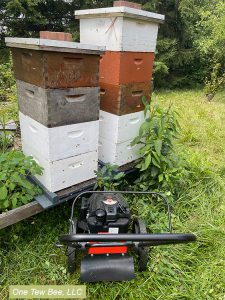
Figure 6. Weed whacking beneath hives.
Hot and Clumsy
This past July 2023 was the hottest July every recorded. Yet the grass kept growing. To keep the grass under control, grass-cutting beekeepers are hot, and clumsy, and are surrounded by irate bees. Can it get any worse? Yes, it can, at the same time, we are also using power mowing equipment. Occasionally, accidents happen. This is a beekeeper’s recent story.

Figure 7. Accidents happen quickly. Attacking bees can be distracting. Many of us have a story.
I got home from work and my wife wanted to cut the grass but she’d never used that particular riding mower. I changed out of my work boots into my Crocs and pulled the mower out of the garage for her. I decided to make a couple passes by my bee hives so my wife wouldn’t get stung.
My bees have never bothered me before. On the first pass, I had hundreds of bees come after me. They were stinging me so much that I was fearful I might have an allergic reaction. I quickly decided to jump off the riding mower and make a run for the house. My foot got caught in the pulley and belt on the mower deck. My croc stayed lodged in the mower belt while I ran into the house. When I got inside and got all the bees off me, I realized how badly my foot was hurt.
I went to the Emergency Room where they said it had broken my toe and cut a tendon. It almost cut my toe off. I had 12 stitches and had to wear a Draco shoe that keeps the weight on my heel and off my toe until my broken toe can heal.
Mowing is Not Beekeeping
Every apiary mowing situation is different but presently, we have an abundance of diversified mowing devices. That selection of devices does not mean that mowing is not hot, demanding work. Don’t go crazy cutting grass and weeds, but when you do mow, I would suggest wearing heavy shoes and a ventilated bee suit with a veil that opens to allow for water sips. Have a lit smoker at the ready. Mowing is not beekeeping. Pace yourself.
Thank you.
I appreciate you reading and sending any comments that you may have. Your time is valuable. I know that.
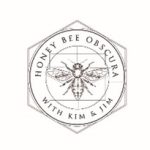 Dr. James E. Tew
Dr. James E. Tew
Emeritus Faculty, Entomology
The Ohio State University
[email protected]
Co-Host, Honey Bee
Obscura Podcast
www.honeybeeobscura.com
Click Here if you listened. We’re trying to gauge interest so only one question is required; however, there is a spot for feedback!
Read along below!
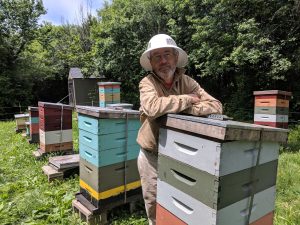
Beekeeping
A Doorway to Nature
By: Ross Conrad
It has been suggested that a spiritual crisis is at the center of the long emergency we collectively face. This crisis manifests itself as a disconnect from the natural world and is considered by many to be one of the primary forces driving the growing degradation of environmental health. When we see ourselves as separate from the natural world, we view nature through the lens of how valuable it is to us personally, either economically or for its beauty. This is the typical Western approach to the notion of pristine wilderness. When we place such values on the natural world and its “resources” viewing it simply as a means to gain financial wealth or other material benefits, it can reinforce our separation from it.
Research indicates that people who have a strong emotional and spiritual connection to nature are more likely to behave positively towards the environment, wildlife and habitats. This suggests that nurturing a greater connection to the natural world among the general population may be critical in addressing our spiritual crisis and helping to reverse the current environmental emergency. There are many ways this nurturing of our connection can manifest including hiking and camping, fishing and hunting, farming and gardening, or bird watching.
For the readers of Bee Culture, beekeeping likely provides one of our primary windows into the natural world. Through beekeeping, we enter the fascinating world of the honey bee; from the waggle dance and the intricacies of swarm behavior, to honey bee biology and the production, use, and unique characteristics of the products of the hive. Our fascination with bees stems from our personal connection to them and our deep understanding of them and their ways. It has been claimed that the honey bee and beekeeping is the most studied and written about topic in the world, second only to us humans. The truth of course, is that all living creatures are absolutely fascinating: we just tend to be clueless to most of the wonder, beauty and amazing intricacies and relationships involved in the lives of the plants, animals and insects that surround us and that we may come into contact with. We simply don’t interact with them enough to understand them and their ways, as well as we do the honey bee, and this can result in their being under-appreciated.
The world of beekeeping acts as a doorway through which we are able to then connect with the wider natural world of all the pests, diseases, plants and weather patterns that impact our bees; for better or worse.
The truth is that we are not separate from nature and the earth. Our bodies are literally made of the same minerals of the earth; we live our lives on the earth surrounded by the natural world; and when we die our body goes back to the earth and eventually gets recycled by the natural world. What we do to the natural world, we do to ourselves. We may not die when a rare pollinator dies out and becomes extinct, but surely a small part of something within us dies, something sacred and precious.
A host of studies have pointed to the fact that the stronger our personal connection to the natural world, the greater our concern for the environment (Whitburn et al., 2019; Mackay and Smidtt, 2019). There is also strong evidence of a positive relationship between a person’s connection to the natural world and one’s personal health, wellbeing and happiness (Capaldi et al., 2014; Barragan-Jason et al., 2023). When individuals are exposed to natural environments, such as mountain tops, coastlines, meadows and forests, the exposure results in stress reduction and assists in mental recovery following intense cognitive activities. It has even been found that a hospital window view onto a garden-like scene can be influential in reducing patients’ postoperative recovery periods and analgesic requirements.
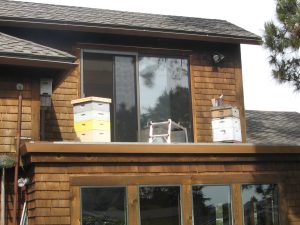
Beekeeping provides a doorway through which individuals can develop a strong spiritual connection to the natural world, especially those living in urban or suburban environments.
Embedded in diverse cultures around the world is the idea that people consciously and unconsciously seek connections with the natural world. The theory that this is a result of evolutionary history where humans have lived in intimate contact with nature was initially put forward by Harvard biologist and two-time Pulitzer prize-winner, E.O. Wilson, in the Biophilia hypothesis (Wilson, 1984). We humans appear to be innately attracted to other living organisms. Evidence suggests that this is particularly evident when life becomes difficult and stressful. How many of us can deny the relaxing effect of a quiet moment by a lake, the soothing effect of sitting by a river, the rejuvenation of a hike through a forest, a stress reducing stroll by the seaside, the calming effect of simply cuddling with a pet dog or cat, or spending time with the honey bee colonies in our apiaries. Simply put, we need contact with nature and the importance of our ability to connect with the natural world has only grown due to our increasingly urban, digital-screen and social media lifestyles that often serve to disconnect us from nature which in turn, may contribute to health and wellbeing problems.
One meta-analysis suggests positive short- and long-term health outcomes with improved self-esteem and mood with exposure to green environments. Proximity to water generated some of the greatest changes and the mentally ill experience the greatest self-esteem improvements (Barton and Pretty, 2010). Other researchers examining the link between finding meaning in life and our relationship to the natural world suggest numerous benefits that arise from a personal connection to the natural world. Not only does nature help us find meaning in life, it can enhance our appreciation for life, and how engaging in nature-based activities (such as beekeeping) “provides an avenue for many people to build meaningful lives” (Passmore and Krouse, 2023).
The idea that contact with nature benefits our mental and physical health appears to be strongly supported by the statistics. According to one researcher, “Animals have always played a prominent part in human life. Today, more people go to zoos each year than to all professional sporting events. A total of 56% of U.S. households own pets. Animals comprise more than 90% of the characters used in language acquisition and counting in children’s preschool books. Numerous studies establish that household animals are considered family members; we talk to them as if they were human, we carry their photographs, we share our bedrooms with them” (Frumkin, 2001).
Beekeepers have their own version of this in what is referred to as the “telling of the bees.” A tradition where it is believed that when the beekeeper dies, someone has to go tell the bees and perhaps hang a piece of black cloth on the hive to place it in mourning or else the colony would die out or abandon the hive. There appears to be many versions of this. Others tell the bees about important events in their lives particularly regarding a death in the family. Considering how easy it is for a beekeeper to put off caring for their bees with our busy lives, this tradition practically served as a way to keep the hives in the thoughts of those that survive a deceased beekeeper, so that they will hopefully prioritize finding a new custodian to take over responsibility for their care in a timely manner.
As a deep personal connection to the natural world, beekeeping has the potential to provide numerous benefits to its participants. Beekeeping encourages one to get exercise along with fresh air and sunshine, and there is significant evidence that suggests that even the occasional bee sting can help fortify the body’s immune system allowing it to more effectively deal with various ailments (provided of course that the person is not hyper allergic to honey bee venom). Beyond all this, we now know that beekeeping can also help establish a spiritual connection to the earth and all the life forms with which we share this planet; a connection that may be critical in our ability to effectively deal with our current reliance on damaging green-house gas emitting technologies that are slowly turning our lives and society upside down.
Many people are suggesting that the weather extremes we have been experiencing around the country and the world is the problem, when really the problem at its base level is the malevolent actions of individual people. Nurturing a greater connection to the natural world in greater numbers of people, such as through activities like beekeeping, might just hold part of the salvation for this world. Something to consider as you go about the business of caring for your bees this Autumn and are tucking your colonies in for the long Winter ahead.
Just the same as a month before,—
The house and the trees,
The barn’s brown gable, the vine by the door,—
Nothing changed but the hives of bees.
Before them, under the garden wall,
Forward and back,
Went drearily singing the chore-girl small,
Draping each hive with a shred of black.
Trembling, I listened: the Summer sun
Had the chill of snow;
For I knew she was telling the bees of one
Gone on the journey we all must go!
An excerpt from the poem Telling the Bees by John Greenleaf Whittier.
Read the full poem here: https://www.poetryfoundation.org/poems/45491/telling-the-bees
Ross Conrad is the author of Natural Beekeeping, Revised and Expanded 2nd Edition, and coauthor of The Land of Milk and Honey: A history of beekeeping in Vermont.
References:
Barragan-Jason, G., Loreau, M., de Mazancourt, C., Singer, M.C., Parmesan, C. (2023) Psychological and physical connections with nature improve both human well-being and nature conservation: A systematic review of meta-analyses, Biological Conservation, Volume 277:109842
Barton J, Pretty J. (2010) What is the best dose of nature and green exercise for improving mental health? A multi-study analysis. Environmental Science & Technology, 44(10):3947-55. doi: 10.1021/es903183r. PMID: 20337470.
Capaldi, C.A., Dopko, R.L., Zelenski, J.M. (2014) The relationship between nature connectedness and happiness: a meta-analysis, Frontiers in Psychology, Volume 5
Howard Frumkin, (2001) Beyond Toxicity: Human health and the natural environment, American Journal of Preventive Medicine, 20(3):234-240, ISSN 0749-3797, https://doi.org/10.1016/S0749-3797(00)00317-2
Mackay, C.M.L. and Schmitt, M.T. (2019) Do people who feel connected to nature do more to protect it? A meta-analysis, Journal of Environmental Psychology, 65:101323
Passmore, Holli-Anne and Krouse, Ashley, N. (2023) The Beyond-Human Natural World: Providing Meaning and Making Meaning, International Journal of Environmental Research and Public Health, 20(12):6170
Whitburn, J., Linklater, W., Abrahamse, W. (2019) Meta-Analysis of human connection to nature and proenvironmental behavior, Conservation Biology, https://doi.org/10.1111/cobi.13381
Wilson, E. O. (1984) Biophilia: the Human Bond with Other Species.: Harvard University Press, Cambridge, MA.
Click Here if you listened. We’re trying to gauge interest so only one question is required; however, there is a spot for feedback!
Read along below!
Found in Translation
Mite Drop!
By: Jay Evans, USDA Beltsville Bee Lab
Varroa mites remain the primary source of honey bee colony losses for beekeepers managing from one to 10,000 colonies. Scientists like us and ardent beekeepers are always on the hunt for new ways to reduce varroa damage to bees and their colonies. One intriguing strategy is to make mites simply fall off their adult bee hosts. Short of changing the electric charge of host or parasite, this repellency can come from 1) making hosts less grippy, 2) somehow clogging the incredibly strong tarsi (feet with ‘toes’ and a spongy, oily, arolia) of mites or 3) affecting mite behavior by making them less likely to find safe spots and hang on to their bees for dear life. Dislodged mites are far more vulnerable to hygienic worker bees and might also simply keep falling down to a hostless, hungry and hopefully, short life. This is probably a central reason that female varroa mites spend very little time wandering the combs of beehives unless they are moments away from entering the brood cell of a developing bee. While on adult bees, mites have much incentive to stay right there, whatever their host is doing to drop them.
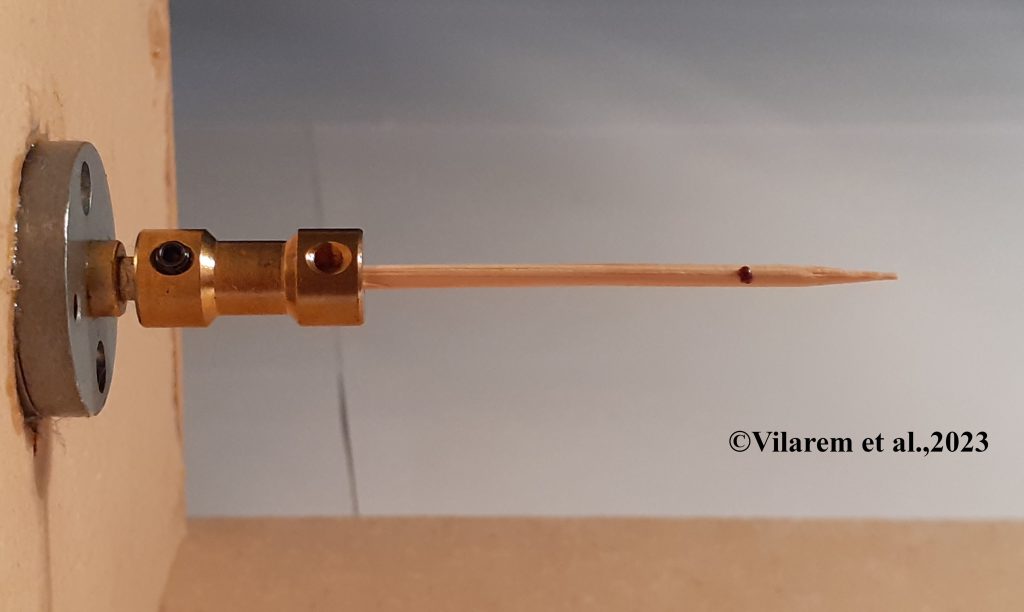 How do mites adhere to their bees so strongly? When mites are actively feeding on bees they are extremely hard to dislodge, since they are partly under the hardened plates of the bee itself and are gripping with a combination of ‘teeth’ and tarsi. Even while taking a break from feeding, mites know to find safe spots on the bee to attach, favoring locations on the abdomen or thorax that are both hairy and away from swinging legs and biting bee mandibles. How can one make them quit their bees given so many hiding places?
How do mites adhere to their bees so strongly? When mites are actively feeding on bees they are extremely hard to dislodge, since they are partly under the hardened plates of the bee itself and are gripping with a combination of ‘teeth’ and tarsi. Even while taking a break from feeding, mites know to find safe spots on the bee to attach, favoring locations on the abdomen or thorax that are both hairy and away from swinging legs and biting bee mandibles. How can one make them quit their bees given so many hiding places?
Caroline Vilarem and colleagues in France recently described an ambitious attempt to document the abilities of mites to hang onto surfaces when exposed to organic acids (Vilarem, C.; Piou, V.; Blanchard, S.; Vogelweith, F.; Vétillard, A. Lose Your Grip: Challenging Varroa destructor Host Attachment with Tartaric, Lactic, Formic, and Citric Acids, Appl. Sci. 2023, 13, 9085. https://doi.org/10.3390/app13169085). These scientists deployed one of the coolest low-tech tools to measure how well mites grip onto a surface. While their ‘Rotavar’ sounds both complex and expensive, it is actually a ‘motor-driven rotating toothpick’. Yes, you can do this at home, with a slow (three or so revolutions per minute) motor and a supply of toothpicks. The authors add to that an extremely careful experimental design and complex statistics to show the different abilities of mites to hang onto sticks and bees coated with acetic, citric, lactic, formic and tartaric acids. The results hint at new modes and new candidates for mite control, with the usual caveat that converting a controlled lab assay to field colonies will be challenging.
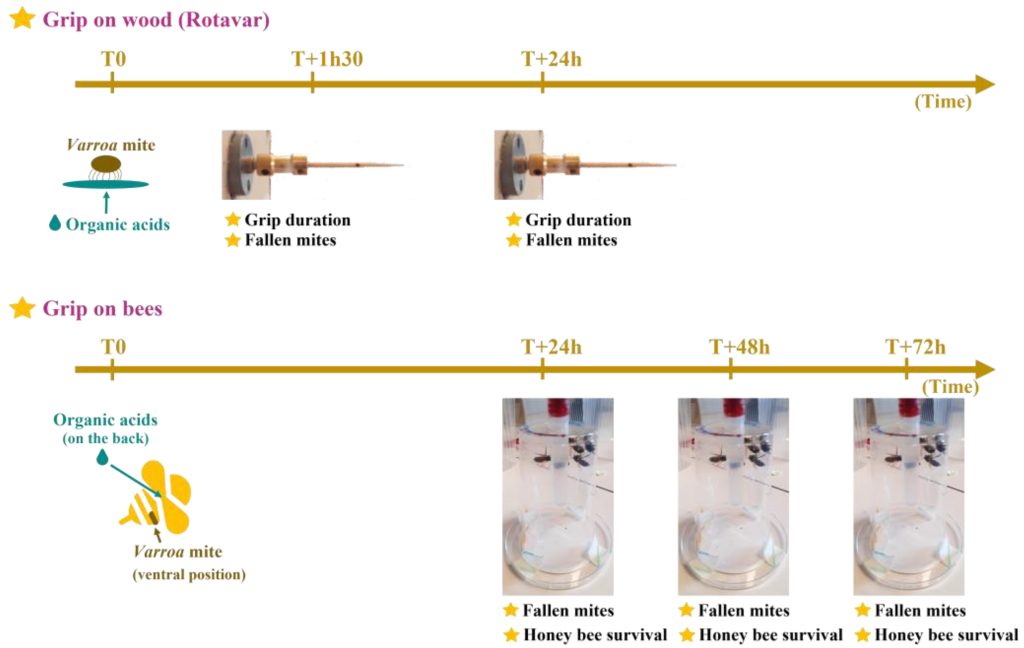
Schematic diagram of the experimental design and measured parameters. Grip on wood (Rotavar): This method relies on direct contact between Varroa’s arolia and the organic acids. The Rotavar set-up is a motor-driven rotating toothpick used to assess V. destructor’s grip. Grip on bees: the host attachment experiment applies acids to the backs of honey bees to remove mites. T0 represents the administration time for treatments; T + 1 h 30, 24 h, 48 h, or 72 h stand for the time post administration used to make measurements. Figure from https://doi.org/10.3390/app13169085
Some highlights: First, acidity itself does not seem to be the solution. Most notably, even high doses of acetic acid had little impact on the abilities of mites to grab toothpicks and this candidate was quickly discarded. So, what can we glean from the differences between the tested acids? Tartaric acid worked great at dislodging mites from spinning toothpicks but was surprisingly poor at dislodging mites from bees. Prior work suggests that the mode of action for tartaric acid is, at least in part, toxicity towards mites. It is possible that the levels of tartaric acid needed to coat bees with a toxic dose are higher than they are on a relatively smooth and barren toothpick. Toothpicks also attract watery compounds (hydrophilic) while bees are coated with oils and are hence more water-repellent (hydrophobic). Maybe the availability of tartaric acid on toothpicks is higher than it would be on oilier bee bodies. Formic acid also worked much better on the wood surface than on bees, an intriguing insight for a well-used and effective mite control. Formic acid is also known to be directly toxic to mites and their cells, and the authors make clear that both direct toxicity and grippiness are clear and perhaps synergistic targets for mite control. The widely used miticide oxalic acid also wins by being directly toxic to mites at levels that are relatively safe for bees, demonstrating that there are many possible ways to turn organic acids into effective treatments.
Lactic acid came out as the best candidate in the study group for divorcing mites from their bees. This acid worked well at dislodging mites from both toothpicks and bees. Lactic acid does not appear to be highly toxic to mites and instead seems to act by changing the mechanics of hanging on. This is a nice lead for exploring acids with similar qualities for their abilities to both grease the ‘Rotavar’ and make bees a more slippery host. In another intriguing result from this nice study, mites that simply walked across paper holding lactic acid were then less good in future grip tests. What is it about lactic acid that burns, cleans or otherwise insults the complex and surprisingly ‘soft’ tarsi of mites?
If this topic has gripped you, consider reading up on the field thanks to a recent open-access paper on stickiness by graduate student Luc van den Boogaart and colleagues in the Netherlands (van den Boogaart, L.M.; Langowski, J.K.A.; Amador, G.J. Studying Stickiness: Methods, Trade-Offs, and Perspectives in Measuring Reversible Biological Adhesion and Friction. Biomimetics 2022, 7, 134; https://www.mdpi.com/2313-7673/7/3/134). For those of us who have stored ‘Freshman Physics’ in a remote hard drive, they give a clear review of how these forces work across organisms; in their words ‘from ticks to tree frogs’. Maybe their figures and insights will inspire a beekeeper or scientist to dream up a safe, effective route to dislodge mites from bees and prevent them from climbing back on. Pulling in people with a knowledge of physics, or just really good imaginations and the ability to build and deploy Rotavars (imagine how entertaining those can be, a la squirrel spinners… https://www.youtube.com/shorts/nBKb_z4_tGY), can only help in the hunt for new mite controls and healthier bees.
]]>By: Nina Bagley
 Miss Lillian Love was born into a Quaker family in Marion, Indiana on October 24, 1880. Her family was from Decatur, Indiana. Her father, Granville Love, was born in Indiana. In 1860, he married Nancy J. Gillibrand. Her family came from England and settled in the vicinity of Indianapolis. The two were married on August 11, 1868, in Morgan County, Indiana. Granville was a farmer and ran a huckster wagon, which proved a good business. Mrs. Nancy Love had nine children from 1869 to 1892. She died on January 31, 1936, at eighty-six, in Decatur, Indiana. Lillian’s father, Granville Love, died May 7, 1925, in Guilford, Indiana. All the children would be trained in English and piano at Central Normal College in Danville, Indiana.
Miss Lillian Love was born into a Quaker family in Marion, Indiana on October 24, 1880. Her family was from Decatur, Indiana. Her father, Granville Love, was born in Indiana. In 1860, he married Nancy J. Gillibrand. Her family came from England and settled in the vicinity of Indianapolis. The two were married on August 11, 1868, in Morgan County, Indiana. Granville was a farmer and ran a huckster wagon, which proved a good business. Mrs. Nancy Love had nine children from 1869 to 1892. She died on January 31, 1936, at eighty-six, in Decatur, Indiana. Lillian’s father, Granville Love, died May 7, 1925, in Guilford, Indiana. All the children would be trained in English and piano at Central Normal College in Danville, Indiana.


Lillian’s parents, Granville and Nancy Love.
Lillian had two years of college, became a teacher, and taught in Indiana and Florida. Women still couldn’t find jobs other than teaching. Lillian and her youngest sister Flossie were involved in women’s rights and equal opportunity for women; they supported women’s rights to vote.
In 1904, Lillian moved to Tacoma, Washington, where she taught for several years. Finding her husband in 1907, she married Jay Levant Hill, who was twenty-five years older than her. Lillian’s husband, Jay, was an inventor who owned his own lumber business. Lillian said that her husband’s “brain was mechanically bent.”

Miss Lillian Love, taken in Washington State prior to her marriage to J. Levant Hill.
Their home would be Mount Shadow Ranch, a two-hundred-acre farm with a charming yellow California-style bungalow, two and a half miles from Elbe, Washington. Surrounding the farm were the bee’s favorite purple hills of fireweed.
Fireweed is a plant that enjoys cool and moist climates and thrives in Pacific Northwest forestlands. It is also considered one of the most prolific plants for honey production, with its nectar having a high sugar concentration. It has a “lightly spicy” or “buttery” flavor.
If you shut your eyes and listen, you can hear the train whistle in the distance as it stops at Park Junction Station in the middle of Mount Shadow Ranch.


1926 – Lillian Hill at Mt. Rainier
Apiary. Image featured in American Bee Journal
“We have some thirty acres under cultivation,” said Mrs. Hill; The rest of the farm is logged-off land which we use to pasture our herd of fifty cattle.”
—American Bee Journal, April 1926.
One day in 1913, an old man came peddling bees. “You have a wonderful place here for bees,” he said, convincing Mrs. Hill to invest in six swarms. Before the older man came along, she had never seen a swarm of bees before. Her six swarms increased and produced so much honey that in 1914 Lillian Hill invested in twenty more swarms, giving her forty hives. That year she harvested 6,500 pounds of pure honey. Lillian had an entrepreneurial spirit and determination to succeed in a male-dominated industry.

Lillian’s marriage to J. Hill.
I don’t know how she accomplished so much. Mrs. Lillian Hill kept a tidy home, raised beef cattle, Duroc-Jersey hogs, geese and ducks, and grew vegetables in the garden. But it would be the bees she loved the most!
Lillian was part owner of the Ranch and owner of the Mount Shadow Apiary. She had a gentle personality. She was independent and had a fire in her eyes that you could see demanded respect.
Being a novice beekeeper found her unprepared. In 1915, she encountered her first obstacle, European Foulbrood that would bring havoc to her beeyard. Words that no beekeeper wanted to hear or experience, the only cure, the dreadful burning of the hives. After that horrible experience with “American Foulbrood,” she only kept a dozen colonies of bees providing honey for her family and neighbors. (American Bee Journal, April 1926.)
“I never camp,” confessed Lillian Hill. “On either the trail of my successes or my failures. I go right on.” That’s her philosophy in a nut-shell.
Although childless, she cared for the children from reform schools, orphan asylums or neighboring farms; she taught the boys and girls everything about beekeeping so they could pay their way through school. She believed that the best and safest way to help any human being is to help him help himself. Particularly, those who needed guidance and education.
In the 1900s, the U.S. was a diverse nation, and its children lived in various circumstances. For years, she had been the leader of the Boys’ and Girls’ Bee Club of Elbe. One of her boys won nearly $80.00 with his exhibits of bees and honey at the Western Washington Fair.
Lillian increased her hives to twenty-six to help one of her boys and it didn’t stop there!
In 1924, to help one of her girls through school, she invested in thirty more hives and loaned them to the girl. The girl lived next door to an abandoned schoolhouse on an acre of ground, which got Mrs. Hill thinking, “I could rent the schoolhouse and land from the school board.”

1921 – Freddie May with his siblings before they were placed in the Washington Children’s Home.
One day in 1924, a young man showed up at the Ranch. His name was Freddie May, and he was born in 1912 in Denver, Colorado. When he was eight years old, he lived in Wenatchee, Washington. His father abandoned the family, and their mother could not care for six children. The children were placed in the Washington Children’s Home in Wenatchee, Washington, in 1921.

Mount Rainier Apiary. Freddie May and Mrs. Lillian Hill.
Freddie somehow got his hands on a newspaper. He came across the ad for a permanent position in beekeeping work. Freddie wanted to learn about the beekeeping business under the leadership of Mrs. Lillian Hill, so he rode on “a bicycle” from Wenatchee, Washington to Elbe, Washington, a hundred and ninety five miles! He was energetic and full of fire and wanted to learn beekeeping.
Lillian took a liking to Freddie and wanted to help him make money to pay his way through school, so she furnished Freddie with plenty of bees on a commission basis of fifty-fifty. In four months, the Colorado cyclist made five hundred dollars for himself.
Freddie would consider Mrs. Lillian Hill his mother and next of kin. Lillian and her husband would become Freddie’s foster parents giving him a home with security. He would attend Eatonville High School and work on the Ranch. He would continue beekeeping and eventually marry and have a family.
During the season of 1925, Mrs. Hill was able to establish the Colorado youth in the schoolhouse helping young boys and girls in need teaching them beekeeping.
In 1926, Lillian Hill had over one hundred and fifty hives of Italian bees, eighty-five at the schoolhouse and sixty-five at home. She produced at least 10,000 sections of comb honey. Mrs. Hill would advertise in the newspapers to get workers “Wanted – an experienced farmer for a permanent position.”
Most of the marketing she did herself in her Buick car. She supplied the best stores in Tacoma and Seattle. “I don’t have to hunt for a market,” declared this energetic woman. In one year, Mrs. Hill raised sixty queens. That was the part of her business that she enjoyed most of all. Mrs. Hill was the president of the Pierce County Beekeepers’ Association for two years.

Mount Rainier
Both triumphs and disasters have knocked often at Lillian Hill’s door on the Mount Shadow Ranch, but neither one ever fazed her. This woman had grit and plenty of it!
Around 1927, Freddie would accidentally run over Lillian’s foot crushing it while she was teaching him how to drive the tractor. An unfortunate outcome was that the doctors had to amputate her leg due to blood poisoning. Lillian had a prosthetic leg from the knee down, but that didn’t stop her. She took it in stride and persevered. In 1929, unfortunately, her husband died. He was the youngest of five and the last of his siblings. He was seventy-one years old. I will say some lives have more trial or tribulations than others, to be sure, but no life is without events that test and challenge us.
In the 1930 census, Lillian is listed as a widow forty-nine years old, with fifty men aged eighteen to sixty-six listed as boarders at the Mount Shadow Ranch and working for Lillian Hill. That’s a lot of men to manage. You would have to have grit and be firm! Among the fifty men working on the farm was Freddie May, the youngest, who was eighteen. His occupation was a Logger.
Not being able to care for the Ranch and losing her husband, not to mention the tractor accident, left her feeling like it would be time to sell the Ranch. Lillian Hill would place the Ranch up for sale.
Advertised in the Tacoma Daily Ledger Sunday, June 23, 1929. “Mountain Shadow Ranch. It is one of the best-stocked Dairy Farms in western Washington, with running water in every field and excellent soil. Forty acres cleared; 120 acres fenced for hogs and cattle; stocked and making money; good seven-room house with school buses to Elbe and Eatonville high school. The farm is a must-see to appreciate it. We will consider small trade—a price of $15,000. Write to Lillian L. Hill for an appointment.”

Family photo of Albert Cook, first wife Nora and their children.

Lillian’s family Bible.
A lot happened in 1930. The Ranch sold, and Lillian Hill married Albert Cook, a widower who worked in the lumber industry. His wife Nora passed away in March of 1929 at the age of fifty-one; they had six children together. Lillian didn’t mind an extended family. She was raising her niece Esther who she adopted at a young age and her foster son Freddie May. After all, Lillian loved children and teaching. Her first husband was in the lumber business so she probably knew Albert Cook.
Albert would marry Lillian in 1930, build apartment buildings and retire from the lumber industry. The two would live in Tacoma, Washington. Lillian’s beekeeping days came to an end, her new occupation would be owner and landlord of her apartment buildings.
Lillian had a very loving relationship for nineteen years with her husband Albert. In May of 1949, Albert passed away at the age of seventy-three. He was buried beside his first wife, Nora, in Tacoma, Pierce, Washington.
The income from the apartments and other investments would give Lillian a comfortable life for the next sixteen years. She lived to be eighty-eight and passed away August 19, 1969 in Tacoma, Pierce, Washington Lillian was a Sixth Avenue Baptist church member. She was buried next to her first husband, Jay Levant Hill.
Freddie May lived to be eighty-three years old. Freddie kept his surname May. He went by Fred (Cook) May, Sr. “Commander” as best by everyone who loved him.

Lillian in her sister Flossie’s backyard. Her dress is purple and black print. She and her sister Flossie always had a matching rhinestone necklace.
Lillian’s youngest sister Flossie, who she remained close with, lived in California. Flossie had a granddaughter Karla who enjoyed her aunt Lillian’s visits. She remembers sitting on her grandmother’s hunter green “davenport” with her aunt Lillian. Her grandma Flossie would sit in her desk chair across the room and the two sisters would talk for hours.
Lillian’s great-niece Karla also remembers how “intriguing” her aunt was. Lillian had blue eyes, was fair-haired and had rosy cheeks. She wore her hair in a braid reaching her waist until one day; she cut it off, curled it up, and put it in a small box for keeping. Karla remembers her Aunt Lillian as sweet but at the same time, tough and gutsy!
Marcus Aurelius was a stoic philosopher. His quote reminded me of Mrs. Lillian Love, her struggles as a woman in the 1900’s and how she put others before her, passing her knowledge about beekeeping on to so many young boys and girls in need. I would like to thank Lillian’s great-niece Karla Babcock for sharing her memories of her Aunt Lillian and grandmother Flossie.
“A life of sacrifice and putting the well being collective first, just like the bees.”
—Marcus Aurelius
Ohioqueenbee
Nina M. Bagley
Columbus, Ohio.
 Nestmate Recognition
Nestmate RecognitionBy: Clarence Collison
Pheromones are involved in intraspecific chemical communication; however, the glands associated with compounds used in nestmate recognition in honey bees remain elusive. This search is difficult since nestmate cues can arise from both within the colony, and from the environment (Kalmus and Ribbands, 1952). For example, Downs and Ratnieks (1999) found no evidence that honey bee guards used heritable cues; instead, guards appear to rely exclusively on environmental cues to distinguish nestmates from non-nestmates. However, nestmate cues can also be produced by the individual, and thus must be under genetic control (Breed, 1983; Page Jr. et al., 1991). A further factor is that the wax used to build comb in the colony is both produced and manipulated by the bees, which means it may be a medium into which recognition cues are transferred (Breed et al., 1998). Therefore, Breed et al. (1998) stated that no single factor is responsible for nestmate recognition in honey bees; rather, all three factors (genetically determined cuticular signatures, exposure to comb wax, and environmental cues e.g. floral cues) seem to work together (Martin et al., 2018).
Comb wax in honey bee colonies serves as a source and medium for transmission of recognition cues. Worker honey bees learn the identity of their primary nesting material, the wax comb, within an hour of emergence. In an olfactometer, bees discriminate between combs on the basis of odor; they prefer the odors of previously learned combs. Representatives of three of the most common compound classes in bee’s wax were surveyed for effects on nestmate discrimination behavior. Hexadecane, octadecane, tetracosanoic acid and methyl docosanoate make worker honey bees less acceptable to their untreated sisters. Other similar compounds did not have this effect. These findings support the hypothesis that nestmate recognition in honey bees is mediated by many different compounds, including some related to those found in comb wax (Breed and Stiller, 1992).
Breed et al. (1998) investigated how kin recognition cues develop and cue differentiation between honey bee colonies. Exposure to the wax comb in colonies is a critical component of the development of kin recognition cues. In this study, they determined how the cues develop under natural conditions (in swarms), whether the genetic source and age of the wax affect cue ontogeny, and whether exposure to wax, as in normal development, affects preferential feeding among bees within social groups. Cue development in swarms coincided with wax production, rather than with the presence of brood or the emergence of new workers; this finding supported previous observations concerning the importance of wax in cue ontogeny. Effective cue development required a match between the genetic source of the workers attempting to enter the hive, the wax to which they were exposed and the guards at the hive entrance. The wax must also have been exposed to the hive environment for some time. Cues gained from wax did not mask or override cues used in preferential feeding interactions; this finding supports the contention that two recognition systems, one for nestmate recognition and the other for intra-colonial recognition, are present.
Recognition of nestmates from aliens is based on olfactory cues, and many studies have demonstrated that such cues are contained within the lipid layer covering the insect cuticle. These lipids are usually a complex mixture of tens of compounds in which aliphatic hydrocarbons are generally the major components. Dani et al. (2005) tested whether artificial changes in the cuticular profile through supplementation of naturally occurring alkanes and alkenes in honey bees affect the behavior of nestmate guards. Compounds were applied to live foragers in microgram quantities and the bees returned to their hive entrance where the behavior of the guard bees was observed. In this fashion, they compared the effect of single alkenes with that of single alkanes; the effect of mixtures of alkenes versus that of mixtures of alkanes and the whole alkane fraction separated from the cuticular lipids versus the alkene fraction. With only one exception (the comparison between n-C19 and (Z)9-C19), in all the experiments bees treated with alkenes were attacked more intensively than bees treated with alkanes. This led them to conclude that modification of the natural chemical profile with the two different classes of compounds has a different effect on acceptance and suggests that this may correspond to a differential importance in the recognition signature.
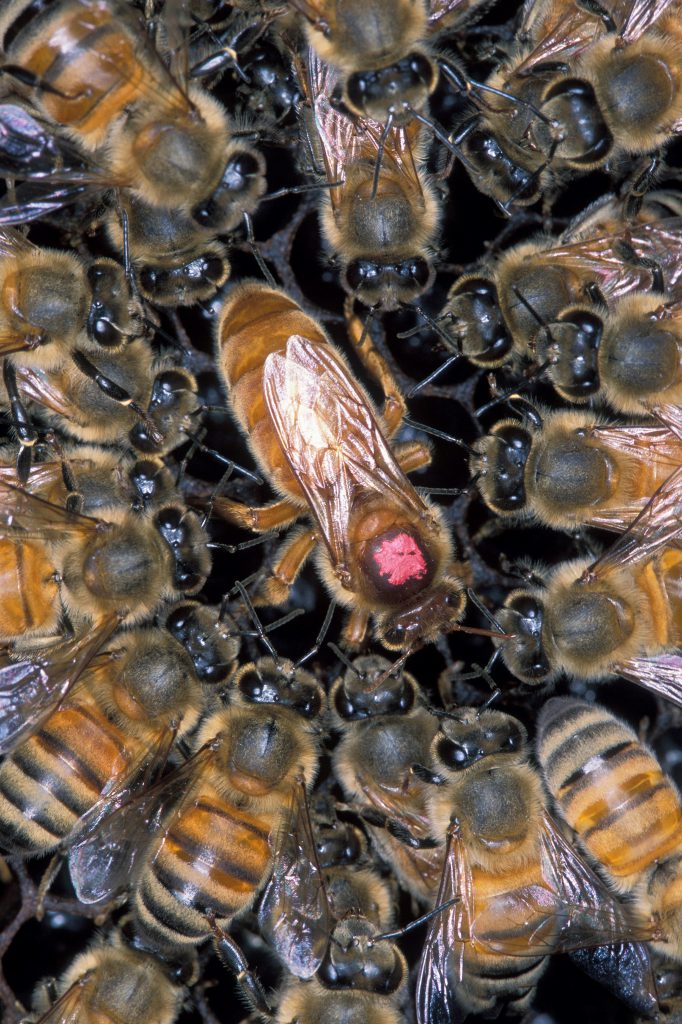 Cuticular hydrocarbons (CHCs) function as recognition compounds in honey bees. It is not clearly understood where CHCs are stored in the honey bee. Martin et al. (2018) investigated the hydrocarbons and esters found in five major worker honey bee exocrine glands, at three different developmental stages (newly emerged, nurse and forager) using a high temperature GC analysis. They found the hypopharyngeal gland contained no hydrocarbons nor esters, and the thoracic salivary and mandibular glands only contained trace amounts of n-alkanes. However, the cephalic salivary gland (CSG) contained the greatest number and highest quantity of hydrocarbons relative to the five other glands with many of the hydrocarbons also found in the Dufour’s gland, but at much lower levels. They also discovered a series of oleic acid wax esters that lay beyond the detection of standard GC columns. As a bee’s activities changed, as it aged, the types of compounds detected in the CSG also changed. For example, newly emerged bees have predominately C19-C23n-alkanes, alkenes and methyl-branched compounds, whereas the nurses’ CSG had predominately C31:1 and C33:1 alkene isomers, which are replaced by a series of oleic acid wax esters in foragers. These changes in the CSG were mirrored by corresponding changes in the adults’ CHCs profile. The CSG is a major storage gland of CHCs. As the CSG duct opens into the buccal cavity (mouth), the hydrocarbons can be worked into the comb wax and could help explain the role of comb wax in nestmate recognition experiments.
Cuticular hydrocarbons (CHCs) function as recognition compounds in honey bees. It is not clearly understood where CHCs are stored in the honey bee. Martin et al. (2018) investigated the hydrocarbons and esters found in five major worker honey bee exocrine glands, at three different developmental stages (newly emerged, nurse and forager) using a high temperature GC analysis. They found the hypopharyngeal gland contained no hydrocarbons nor esters, and the thoracic salivary and mandibular glands only contained trace amounts of n-alkanes. However, the cephalic salivary gland (CSG) contained the greatest number and highest quantity of hydrocarbons relative to the five other glands with many of the hydrocarbons also found in the Dufour’s gland, but at much lower levels. They also discovered a series of oleic acid wax esters that lay beyond the detection of standard GC columns. As a bee’s activities changed, as it aged, the types of compounds detected in the CSG also changed. For example, newly emerged bees have predominately C19-C23n-alkanes, alkenes and methyl-branched compounds, whereas the nurses’ CSG had predominately C31:1 and C33:1 alkene isomers, which are replaced by a series of oleic acid wax esters in foragers. These changes in the CSG were mirrored by corresponding changes in the adults’ CHCs profile. The CSG is a major storage gland of CHCs. As the CSG duct opens into the buccal cavity (mouth), the hydrocarbons can be worked into the comb wax and could help explain the role of comb wax in nestmate recognition experiments.
Worker honey bees are able to discriminate between combs on the basis of genetic similarity to a learned comb. The nestmate recognition cues that they acquire from the comb also have a genetically correlated component. Cues are acquired from comb in very short exposure periods (five minutes or less) and can be transferred among bees that are in physical contact. Gas chromatographic analysis demonstrates that bees with exposure to comb have different chemical surface profiles than bees without such exposure. These results support the hypothesis that comb-derived recognition cues are highly important in honey bee nestmate recognition. These cues are at least in part derived from the wax itself, rather than from floral scents that have been absorbed by the wax (Breed et al., 1995).
Experiments indicated that the most important recognition pheromones are the fatty acids, particularly palmitic acid, palmitoleic acid, oleic acid, linoleic acid, linolenic acid and tetracosanoic acid. These fatty acids are mixed with the wax hydrocarbons from wax glands, molded into comb and then transferred onto the workers as they contact the comb. The result is a colony level signature that varies little among workers in a colony. Newly emerged workers have few external fatty acids or hydrocarbons. Oleic acid is more abundant than the other fatty acids on newly emerged bees, but the amount of oleic acid on the cuticle does not vary significantly among colonies. Newly emerged workers are accepted even though they have no signature yet; the “password” for new bees to be admitted to their colony is apparently the lack of a signal. This conclusion is corroborated by the finding that guards tend to treat sodium hydroxide-washed older bees as if they are newly emerged (Breed, 1998).
The integration of recognition cues is described as follows. Fatty acids and hydrocarbons are components of the wax comb that is produced by the bees. The relative abundances of fatty acids and hydrocarbons in wax varies among colonies, giving them unique chemical signatures. Food odors may also be absorbed by the comb, adding to its uniqueness. Newly emerged bees produce their own hydrocarbon coating, which is modified as they move around the nest by the addition of hydrocarbons and fatty acids from the comb. Of the compounds tested in the laboratory, fatty acids are the most important recognition pheromones, but other, as yet untested compounds may also contribute to the recognition odor. Hydrocarbons have generally been assumed to be the primary recognition pheromones of honey bees. However, none of the major structural hydrocarbons of honey bees (i.e., n-alkanes) yields a positive result in a recognition bioassay, nor do these compounds differ significantly in relative concentration among families of bees (Breed, 1998).
The environmental and genetic components of recognition are difficult to separate even in controlled conditions. Getz and Smith (1983) showed that the honey bee discriminates between full and half-sisters raised in the same hive, on the same brood comb in neighboring cells, thus demonstrating a significant genetic component to the recognition process.
Nestmate recognition information can come from either contact chemoreception or olfaction. Mann and Breed (1997) investigated what role airborne olfactory cues play in nestmate recognition by honey bee colony guards, and how do these signals affect guard orientation and behavior? They demonstrated that airborne cues play a significant role in guard bee recognition of nestmates and non-nestmates. Exposure of a guard bee to the scent of a non-nestmate resulted in increased locomotory rate and changes in the directional orientation of guard bees. Exposure to scent of a non-nestmate did not, however, increase the likelihood that a second non-nestmate would be attacked when placed with the guard. Observations of guard behavior at colony entrances indicate that guards discriminate nestmates from non-nestmates with high efficiency.
Floral oils are an important component of the honey bee’s olfactory environment. Bowden et al. (1998) used laboratory and field tests to determine whether floral oils affect nestmate recognition in honey bees. In the laboratory, newly emerged worker bees, that have not been exposed to comb wax, responded more aggressively to bees that had been exposed to floral oils than unexposed control bees. In the field, guard bees did not respond differently to foragers that had been exposed to floral oils. Floral oils may play a supplementary role in nestmate recognition; however, if they have any effect, it is secondary to cues acquired from comb during development.
Downs et al. (2000) investigated the effect that floral oils (anethole, citronellal, limonene and linalool) have on the probability of nestmates and non-nestmates being accepted by guard bees at nest entrances. Floral oils did not affect the probability of workers, either nestmates or non-nestmates, being accepted by guards. However, the presence of floral oils did increase the time taken for a guard to reject an introduced bee. These data show that guards are sensitive to floral oils but use other recognition cues when assessing colony affiliation.
Honey bees have the ability to distinguish among groups of larvae that are destined to become queens and preferentially rear highly related nestmate larvae over less related larvae that are not nestmates (Page and Erickson, 1984).
Colonies of honey bees from two patrilines (cordovan and dark) were established and observations were made on the behavior shown by the worker bees in rearing queen larvae within their colonies. The relationship among the bees within these colonies was either r = ¾ (super-sisters) or r = ¼ (half sisters). The worker bees showed preferential care to the queen larvae that were of their own patriline. Workers of the cordovan patriline showed a stronger preference for larvae of their own patriline than did the dark workers. Cordovan workers also showed a higher rate of visitation, indicating behavioral differences between the patrilines. These results suggest that kin selection is operating on honey bee behavior used in rearing reproduction (Noonan, 1986).
A honey bee queen is usually attacked if she is placed among the workers of a colony other than her own. This rejection occurs even if environmental sources of odor, such as food, water and genetic origin of the workers, are kept constant in laboratory conditions. The genetic similarity of queens determines how similar their recognition characteristics are; inbred sister queens were accepted in 35% of exchanges, outbred sister queens in 12% and non-sister queens in 0%. Carbon dioxide narcosis (stuper, unconsciousness) results in worker honey bees accepting non-nestmate queens. A learning curve is presented, showing the time after narcosis required by workers to learn to recognize a new queen. In contrast, workers transfer results in only a small percentage of the workers being rejected. The reason for the difference between queens and workers may be because of worker and queen recognition cues having different sources (Breed, 1981).
Boch and Morse (1974, 1979) have shown that honey bee queens can be recognized individually by swarms of bees. They found that marking a queen with shellac-based paint to give her a distinctive odor resulted in workers later exhibiting a preference for any queen marked with that paint. However, their experiments do not show whether the odors used by workers to recognize queens are produced by the queens or are environmentally acquired. In a series of studies concerned with queen introduction into colonies, Szabo (1974, 1977) also found that workers could discriminate among queens, but did not approach the issue of the source of recognition odors directly. It was also found that factors such as the age and weight of an introduced queen could affect worker choice among introduced queens. Yadava and Smith (1971) found that the mandibular gland contents of the queen were important in the release of worker aggression towards an introduced queen (Breed, 1981).
References
Boch, R. and R.A. Morse 1974. Discrimination of familiar and foreign queens by honey bee swarms. Ann. Entomol. Soc. Am. 67: 709-711.
Boch, R. and R.A. Morse 1979. Individual recognition of queens by honey bee swarms. Ann. Entomol. Soc. Am. 72: 51-53.
Bowden, R.M., S. Williamson and M.D. Breed 1998. Floral oils: their effect on nestmate recognition in the honey bee, Apis mellifera. Insectes Soc. 45: 209-214.
Breed, M.D. 1981. Individual recognition and learning of queen odors by worker honey bees. Proc. Nat. Acad. Sci. USA. 78: 2635-2637.
Breed, M.D. 1983. Nestmate recognition in honey bees. Anim. Behav. 31: 86-91.
Breed, M.D. 1998. Recognition pheromones of the honey bee. Bioscience 48: 463-470.
Breed, M.D. and T.M. Stiller 1992. Honey bee, Apis mellifera, nestmate discrimination: hydrocarbon effects and the evolutionary implications of comb choice. Anim. Behav. 43: 875-883.
Breed, M.D., M.F. Garry, A.N. Pearce, B.E. Hibbard, L.B. Biostad and R.E. Page, Jr. 1995. The role of wax comb in honey bee nestmate recognition. Anim. Behav. 50: 489-496.
Breed, M.D., E.A. Leger, A.N. Pearce, and Y.J. Wang 1998. Comb wax effects on the ontogeny of honey bee nestmate recognition. Anim. Behav. 55:13-20.
Dani, F.R., G.R. Jones, S. Corsi, R. Beard, D. Pradella and S. Turillazzi 2005. Nestmate recognition cues in the honey bee: differential importance of cuticular alkanes and alkenes. Chem. Senses 30: 477-489.
Downs, S.G. and F.L.W. Ratnieks 1999. Recognition of conspecifics by honey bee guards (Apis mellifera) uses non-heritable cues applied to the adult stage. Anim. Behav. 58: 643-648.
Downs, S.G., F.L.W. Ratnieks, S.L. Jefferies, and H.E. Rigby 2000. The role of floral oils in the nestmate recognition system of honey bees (Apis mellifera L.). Apidologie 31: 357-365.
Getz, W.M. and K.B. Smith 1983. Genetic kin recognition: honey bees discriminate between full and half sisters. Nature 302: 147-148.
Kalmus, H. and C.R. Ribbands 1952. The origin of the odours by which honey bees distinguish their companions. Proc. R. Soc. Lond. B. 140: 50-59.
Mann, C.A. and M.D. Breed 1997. Olfaction in guard honey bee responses to non-nestmates. Ann. Entomol. Soc. Am. 90: 844-847.
Martin, S.J., M.E. Correia-Oliveira, S. Shemilt, and F.P. Drijfhout 2018. Is the salivary gland associated with the honey bee recognition compounds in worker honey bees (Apis mellifera)? J. Chem. Ecol. 44: 650-657.
Noonan, K.C. 1986. Recognition of queen larvae by worker honey bees (Apis mellifera). Ethology 73: 295-306.
Page, R.E. Jr. and E.H. Erickson Jr. 1984. Selective rearing of queens by worker honey bees: kin or nestmate recognition. Ann. Entomol. Soc. Am. 77: 578-580.
Page, R.E. Jr., R.A. Metcalf, R.I. Metcalf, E.H. Erickson Jr. and R.L. Lampman 1991. Extractable hydrocarbons and kin recognition in honey bee (Apis mellifera L.). J. Chem. Ecol. 17: 745-756.
Szabo, T.I. 1974. Behavioural studies of queen introduction in the honey bee 2. Effect of age and storage conditions of virgin queens on their attractiveness to workers. J. Apic. Res. 13: 127-135.
Szabo, T.I. 1977. Behavioural studies of queen introduction in the honey bee 6. Multiple queen introduction. J. Apic. Res. 16: 65-83.
Yadava, R.R.S. and M.V. Smith 1971. Aggressive behavior of Apis mellifera L. workers towards introduced queens II. Role of mandibular gland contents of the queen in releasing aggressive behavior. Cand. J. Zool. 49: 1179-1183.
Clarence Collison is an Emeritus Professor of Entomology and Department Head Emeritus of Entomology and Plant Pathology at Mississippi State University, Mississippi State, MS.
]]>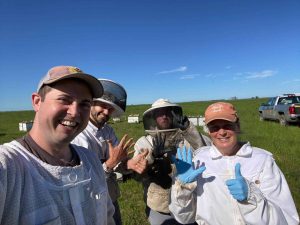
The BIP team takes a break from inspecting colonies. From left to right: Eric Malcolm, Ben Sallmann, Cade Houston, Anne Marie Fauvel. © 2022, Eric Malcolm, beeinformed.org
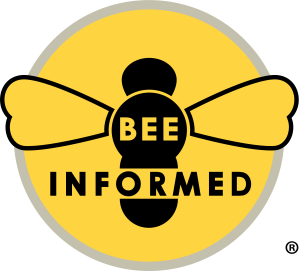 Looking for something to do Thursday, Sept. 14? Want to support BIP?
Looking for something to do Thursday, Sept. 14? Want to support BIP?
Join BIP LIVE for an hour of enjoyable conversation with beekeeping YouTuber David Burns! He, alongside Bee Informed Partnership’s Anne Marie Fauvel and Eric Malcolm, will discuss what BIP is all about and chat about honey bee health.
David is sponsoring this livestream fundraising event as an opportunity to share more about BIP’s work with the community and help raise much-needed funds to support their mission.
Stop by for a visit and stay for the fun by visiting David Burns’ YouTube channel on Thursday, September 14 at 8pm EST / 7pm CST!
YouTube link not working? Copy and paste this link into your browser’s search bar instead: https://www.youtube.com/watch?v=8nCvJNSE_JY
Did you know David Burns writes an article in Bee Culture every month? Check out his article from June and then subscribe to never miss one of his article! June article: https://www.beeculture.com/hot-hive-inspections/
]]>Click Here if you listened. We’re trying to gauge interest so only one question is required; however, there is a spot for feedback!
Read along below!
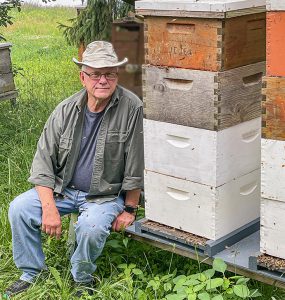 My Apiary Ecosystem
My Apiary Ecosystem
Honey bees are only a part of it.
By: James E. Tew
There’s always going to be something
In my hives or in my life, there is always going to be something – some issue or some problem. I literally just finished a phone call with one of my adult daughters. She had just eliminated a harmless Wolf Spider (Tigrosa annexa) because it frightened her young son (my nine-year old grandson). A few weeks ago, she had a problem with ants in her kitchen, but now they are gone. Now, she has Springtails (Collembola) in one of her bath showers. She complained to me that she feels that her home is under constant attack. I tried to tell her that there is always going to be something going awry. Always. Chill out. I don’t think she listened to me, but I listened to her.
Since I have spent my adult life studying honey bees, she assumed that I was also an information resource for Springtails. Readers, I don’t know anything about these small flea-sized arthropods, but unintentionally, my daughter set me to thinking and exploring. What do I know about Springtails? In all my beekeeping years, I have never asked or thought about the presence of Collembola in bee hives.
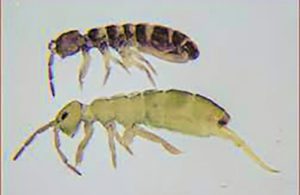
Figure 1. Springtails are about the size of a flea and seemingly cause no harm to bees or beekeeping.
Springtails are common in organic materials that are being degraded. On a whim, I keyed in a web search on Springtails (Collembola) in bee hives. I immediately got hits. All the citations that I found were from observant beekeepers. Having not found any information from academic or regulatory sources, I went to an AI open-source app and was given the following, undocumented information.
Collembola, commonly known as Springtails, are small arthropods that belong to the class Collembola. They are found in a wide range of habitats, including soil, leaf litter and decaying organic matter. While they are not typically associated with bee hives, it is possible for Springtails to be present in bee hives under certain conditions.
Springtails are detritivores, meaning they feed on decaying organic matter and microorganisms. In a bee hive, there may be small amounts of organic debris, such as pollen, beeswax and other residue, which could provide a food source for Springtails. However, the presence of Springtails in a bee hive is usually considered incidental and not a significant problem for honey bees.
I had no idea
I had no idea that these small animals could occasionally be found in hives, but my conversation with my daughter came at a time that I had been pondering this very concept. What is routinely in my bee hives and in my apiary other than honey bees? I have never found a comprehensive listing of the lifeforms that I could expect to find there.
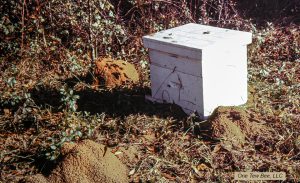
Figure 2. Fire ants and my honey bees. Do the ants help or hurt my bees? Ants, of many species, are common in my beeyard.
My apiary is essentially a distinct ecosystem. My apiary is where I keep my bees, but I have long since realized that many other species find that an apiary is home for them, too. These “unknowns” can apparently fall into three broad categories: harmful, beneficial or neutral.
The Big List
Early in our beekeeping journeys, we are exposed to what I have named the “Big List.” Some of the common entries on this list are raccoons, skunks, ants, wax moths, small hive beetles, birds, toads and mice. It is not my intent to discuss these common hive intruders here. Yet, in the hours and hours that I have either sat by my colonies or pawed through them, I routinely see other species and wonder what they’re up to as they bum around my hives. Usually, their presence remains a mystery.
Flies
Of course, there are numerous species of flies in and around my hives and colonies. We’ve all seen them. In fact, the classic book, Honey Bee Pests, Predators, & Diseases (Morse, Roger A. & Kim Flottum. Honey Bee pests, Predators, & Diseases. A.I.Root Company, Medina, Ohio. 44691. 718 pp. Chpt 8. P 143-162.) has a designated chapter on various fly species and their effects on bee colonies. Essentially, flies and their associated larvae are degraders and generally, do not have a harmful effect on healthy bees.
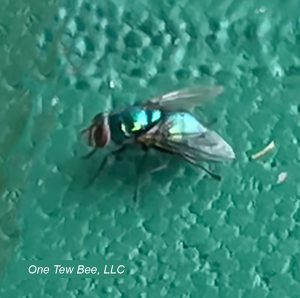
Figure 3. Common Green Bottle Fly (Blow Fly), probably Lucilia sericata, parked on the front of one of my active hives.
But, I can’t help but notice the occasional Green Bottle Fly nosing around my active hives. They are very flighty and will not allow a close camera shot before taking quick flight. Why are they there? I never see them get inside the hive.
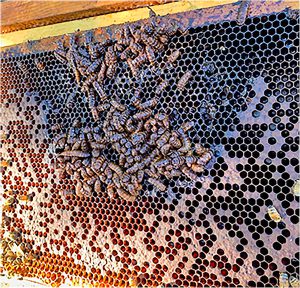
Figure 4. Black Soldier Fly larvae, H. illucens larvae, on honey bee frame. (Scott Razee photo)
But there are unique encounters between various Dipterous species and honey bees that are rare. Anthony (Auth, C. Anthony, Hauser, M. & Hopkins, B.K. A scientific note on a black soldier fly (Stratiomyidae: Hermetia illucens) infestation within a western honey bee (Apis mellifera) colony. Apidologie 52, 576–579 (2021). https://doi.org/10.1007/s13592-021-00844-y) published a scientific note on a Black Soldier Fly (Stratiomyidae: Hermetia illucens) infestation within a western honey bee (Apis mellifera) colony. In the article abstract, Anthony, et al. reported:
Black soldier Fly larvae (Hermetia illucens) were discovered in a weak honey bee colony in Hailey, Idaho. The larvae were localized to the brood area and caused the affected comb to putrefy. Further communication with the beekeeper revealed that the colony recently returned from California and that the larvae likely originated there as well. In California, H. illucens are common and exist sympatrically with honey bees, yet there have been very few reports of damage. We therefore believe H. illucens are unlikely to cause damage to healthy colonies or significantly impact the apiculture industry. This report is the first published observation of H. illucens in Idaho and shows conclusively for the first time that H. illucens associates with honey bee colonies in North America.
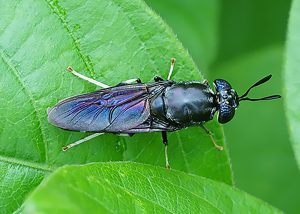
Figure 5. Adult Black Soldier Fly (Utah State University Extension)
There are distinct Diptera species that either are outright harmful to bees or other flies that are considered to be minor pests. Examples of damaging species are Phorid Flies (Zombie Flies) while a lesser pest is the bee louse (Braula caeca). These pests are documented elsewhere in the beekeeping literature. I will not cover them here.
Earwigs
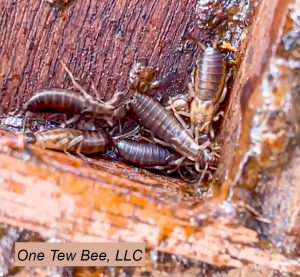
Figure 6. Adult European earwigs on the inner cover of my hive.
How bad can earwigs be? In Alabama, earwigs are commonly found in honey bee colonies in significant numbers. No doubt they are found in other states. I have noted that earwigs were not a common hive resident in Ohio, but that all changed a few years ago. I now have earwigs in my office, in my home and in my bee hives.
I don’t know that they do anything within the hive. I faintly remember one Russian paper, that reported that earwigs could be alternate hosts for the bacteria causing European Foulbrood. Other than that one point, I have never heard complaints about them.
Of course, they are a pain when extracting and must be caught in the filter when processing honey. Straining bees and bee parts from honey is bad enough, but earwigs in the honey filter are unsightly. I don’t know of anything that you can do about them. In fact, I’m not sure anything should be done about them.
Roaches
As an entomologist, I respect roaches. They are the consummate survivor. Obnoxious that they are to humans, one must respect their persistence. Many, many developmental years ago, roaches “learned” to fold their wings over their bodies so they could exploit more niches, than say, a broad-winged insect like a dragonfly (dragonflies will also occasionally prey on honey bees). By storing their folded wings over their bodies, cockroaches could, more easily, get under your refrigerator or inside your bee hives. They have been a challenge for me everywhere I have kept bees.
Like so many other insect visitors/invaders, roaches are drawn to both the sweet food supply as well as the protein supplies – and then there are all the decaying larvae and adult bees to munch on. The question is begged, “Why would roaches NOT be in our hives and stored equipment?”
In the beekeeping literature, it is often written that the damage roaches do is minimal, but I want to loudly say that the appearance of just a single roach in your honey house can dissuade even the staunchest customer who is considering buying your honey. And then there is the excreta to consider. In fact, one of my most serious concerns of both cockroaches and earwigs is the excrement that they leave behind.
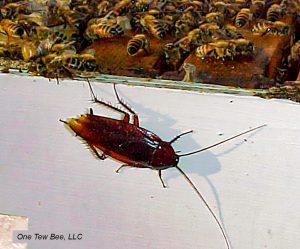
Figure 7. Unfortunately, a cockroach is not an uncommon hive visitor.
It is also commonly written that cockroaches are primarily found in weakened or otherwise ailing colonies. Yes, that is surely true, but I will loudly say that great numbers of roaches happily live on the inner cover of populous colonies. When the outer cover is removed, in a flash, they scamper down into the bees.
In my opinion, there is little to be done to control a roach infestation. Protecting the customer and protecting the purity of the honey product is about all that can be done. Yet, I cannot conclusively say that a modest roach infestation is absolutely harmful to the bees. Maybe future studies will continue to add information to this colony co-habitant.
Honey Bee Cousins
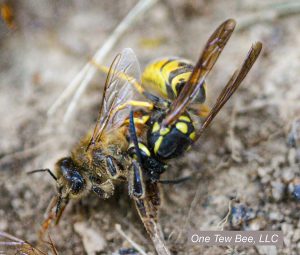
Figure 8. A yellowjacket lunching on one of my dead honey bees.
Yellowjackets
Though yellowjackets are on my “Big List” and are common pests in the beeyard, I have included them here. In my yards, these brightly colored insects could almost be a traditional resident of my apiary. Yellowjackets get included on my “mystery” list due to technicalities.
Yellowjackets (probably Vespula maculifrons) readily see their honey bee cousins as a potential food supply. On occasion, these wasps may have a nest in my apiary, but much more likely is that these hymenopterous insects are simply foraging within my apiary.
Experienced beekeepers have commonly seen yellowjackets mulling around the detritus at the hive entrance, but they will also enter a weakened colony and take honey, pollen, brood and adults depending on their own colony needs.
As such, yellowjackets get an entry on the common list of bee colony pests, but they do not seem to be the effective cause of the colony’s decline but are more commonly responding to a colony that has been weakened by other factors. Yellowjackets can be numerous when robbing behavior is rampant.
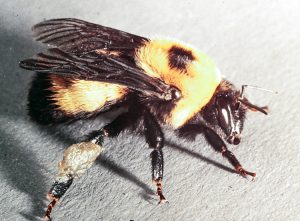
Figure 9. Bumblebees can frequently be seen attempting to enter a honey bee colony. This can be disastrous for the bumblebee with deadly results.
Bumblebees
I frequently see bumblebees trying to enter a bee colony. How suicidal is that? Only on a few occasions have I stumbled onto a bumble nest in unused honey bee equipment, but they are frequently in my apiary surely searching for food.
In fact, bumblebees may not necessarily be attracted to my honey bee colonies specifically, but they may be drawn to certain characteristics or resources associated with honey bee colonies. I can come up with a few reasons that may explain why bumblebees are sometimes found near my honey bee colonies:
- Floral resources: Honey bee colonies are known to forage on a wide variety of flowering plants to collect nectar and pollen. Bumblebees, like honey bees, are also generalist foragers and seek out similar floral resources.
- Odor cues: Honey bee colonies emit a combination of pheromones and odors that can be detected by other bees, including bumblebees. These chemical signals may serve as attractants, potentially drawing bumblebees to the entrance of the honey bee colony.
- Nesting opportunities: While honey bees typically nest in enclosed structures such as beehives or tree cavities, bumblebees often create nests in the ground or other protected locations. However, bumblebees may occasionally take advantage of abandoned honey bee hives or other suitable cavities near a honey bee colony, which could lead to their presence in the area.
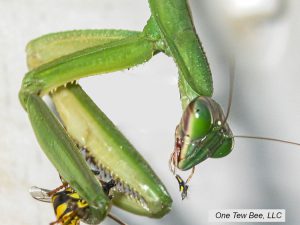
Figure 10. The apiary ecosystem can become complicated. This mantis is eating a yellowjacket that it caught while sitting atop one of my hives.
It’s important to note that interactions between bumblebees and honey bees can vary depending on the specific circumstances and the behavior of individual bees. While they may coexist peacefully in some cases, competition for limited resources, like nectar or nesting sites, can also occur.
My core point for this article
The apiary is an active place, but not only for honey bees. Many other common and not-so-common insects and animals hang around the beeyard foraging for food or shelter. You and I take a staunch view of these unwanted visitors. But truthfully, we do not know a lot about the complex interaction between all these other species and our honey bees.
For instance, Caron (Caron, Dewey. In Honey Bee Pest, Predators, and Diseases cited elsewhere in this article.), listed more than fifteen different beetle species that could be found in beehives – usually in the bottom board litter. Most beetle species had no ill effect on our bees, but I can’t help but wonder if some of those species could be beneficial to our honey bees. Currently, no one seems to know.
In this article, I have only tinkered with a few of the species that we can see with our unaided eyes. I made no effort to review the macroscopic visitors. Examples are: protozoans, fungi and nematodes. They’re all there, too. Readers, I sense that I’m describing a bee hive supermarket or maybe a big box store for insects.
Not wanting to run amok here, but it appears to me that the apiary is a significant food and shelter resource for a lot of other insects and animals. As beekeepers, we laud the effectiveness of the workers’ defensive stinger, but this protective device does not seem to be very effective against spiders, earwigs, birds or a fungus particle. I’m guessing that out of simple necessity, bees coexist with many of these interlopers. Hive visitors come in differing sizes and represent many diverse species.
Despite everything the bees and their keepers can do, the apiary will seemingly continue to be an attractive site for non-bee species. In this article, I’m trying to ask, “From a diversified ecological position, is this necessarily a bad thing?” Consider how many other species are being subsidized and nurtured by resources from our apiaries. Could it be said that our bee hives are “community centers” for a host of non-apis species? I think so. Blame my daughter. She started this.
Thank you for reading and thinking.
Dr. James E. Tew
Emeritus Faculty, Entomology
The Ohio State University
[email protected]
 Co-Host, Honey Bee
Co-Host, Honey Bee
Obscura Podcast
www.honeybeeobscura.com
Click Here if you listened. We’re trying to gauge interest so only one question is required; however, there is a spot for feedback!
Read along below!

Pure Honey?
Probably Not So Much
By: Ross Conrad
Most widely known as components of Teflon coated cookware and firefighting foams, PFAS are extremely persistent in the environment. Researchers don’t really have a very good handle on how long it takes for them to actually break down, if they ever do, which is why they are sometimes referred to as forever chemicals.
PFAS Everywhere
Due to their unique properties, these chemicals are used in an extremely wide range of commercial, industrial and consumer products, including adhesives, building and construction materials, cleaning products, paints, varnishes and inks, cosmetics and personal care, dry cleaning, flea and tick products, electronics, explosives and ammunitions, the oil and gas industries, and the medical industry, among others (Gaines, 2021). A huge number of PFAS chemicals have been produced and distributed through the global supply chain, with over 9,000 PFAS related chemicals recorded dating back to before 1950 according to the Environmental Protection Agency Master list of PFAS substances (EPA).
High Level of Toxicity
Peer reviewed studies have connected exposure to certain PFAS chemicals to a host of human health problems including reproductive effects such as decreased fertility or increased high blood pressure in pregnant women, developmental effects or delays in children, increased risk of some cancers, suppression of the body’s immune system and interference with the body’s natural hormones, along with increased cholesterol levels and/or risk of obesity (EPA, 2023). Some of these chemicals are so toxic that in 2022, EPA released a lifetime drinking water health advisory for four PFAS substances – not in the amounts of parts per million, or parts per billion, but in the fractions of parts per trillion range (U.S. Gov., 2022).
Health effects associated with exposure to PFAS are difficult to nail down for many reasons. Although there are thousands of PFAS with potentially varying effects and toxicity levels, most studies have focused on a limited number of better known PFAS compounds. Meanwhile, people can be exposed to PFAS in different ways and at different stages of their life, and the types and uses of PFAS change over time. All of this makes it challenging to track and assess how exposure to these chemicals occurs and how they will affect human health.
Honey Bee Exposure
In the June issue of Bee Culture, I note that PFAS used in plastic manufacturing (most notably in high density and low density polyethylene – HDPE & LDPE) has the potential to leach out of plastic hive components and impact bees and honey. Well, it turns out there is yet another avenue for PFAS to potentially make its way into our hives: pesticides (Lasee et al., 2022).
PFAS chemicals are being found in a wide variety of pesticides. Sometimes, the PFAS is the active ingredient or added as an adjuvant, or so called “inert” ingredient included in the pesticide formulation to enhance the effectiveness of the active ingredient. Other times, the levels of PFAS found in a particular pesticide is so small it is likely a result of the chemical leaching out of plastic packaging and into the pesticide or its components prior or during manufacture. Since pesticides are applied to our food crops, researchers are documenting PFAS chemical build up (bioaccumulation) in fish, animals and people.
Officials in the state of Maine found that more than 1,400 pesticides contain active ingredients that meet the state’s definition of PFAS (EWG, 2023). Researchers have also documented the migration of toxic pesticides from the surrounding environment into honey bee colonies.
The common presence of PFAS in pesticides, potentially including those many beekeepers place in their hives, is concerning not just from a human perspective but also from the bee’s. A small but growing body of research reveals the potential for adverse impacts of PFAS exposure in honey bee colonies. One researcher found that a honey bee’s oral exposure to PFOS resulted in a 72-hour oral median lethal dose (LD50) of 0.40 mg per bee (Wilkins, 2001). Meanwhile, a correlation between the bioaccumulation of fluorinated pesticides in honey bees, along with other types of pesticides, and mass mortality events of honey bee colonies has been documented (Martinello et al., 2019). Another study found that not only do PFAS have the potential to adversely impact honey bees, they can migrate into honey, the primary source of carbohydrate and energy for honey bees and one of the primary hive products produced by beekeepers (Sonter et al., 2021). Given the well-established fact that pesticides are commonly found in honey samples, it should come as no surprise if further testing uncovers widespread PFAS contamination in honey sold for human consumption.
States Taking the Lead
PFAS contamination presents a mostly unexamined problem for farmers all across the country. Prior to the recent revelation of PFAS contamination of pesticides, farmland has historically been contaminated with PFAS through the spreading of waste water treatment plant sewage sludge as an agricultural fertilizer. Another acknowledged source of contamination is the leaching of PFAS chemicals off military bases onto nearby farms and water supplies.
As part of the effort to get a handle on this situation, Maine has become the first state to enact a comprehensive ban on pesticides that include intentionally added PFAS, as well as pesticides contaminated with PFAS. The ban is currently set to take effect in 2030.
A second state to move to ban PFAS is Minnesota. Scientist’s understanding and ability to detect PFAS in the environment has evolved greatly since the Minnesota Pollution Control Agency (MPCA) and the Minnesota Department of Health (MDH) began investigating them back in 2002. Laboratories at that time had only identified two PFAS and extremely low concentrations were undetectable given the existing technology at that time. Today, we are able to measure extremely small amounts (parts per trillion) of several PFAS. As noted before, studies have linked long-term exposure to PFAS in this range to negative outcomes especially for the most vulnerable members of our population: children, the elderly, pregnant women and those with compromised immune systems.
The writing is on the wall when it comes to PFAS compounds. One of the world’s primary PFAS manufacturing companies, 3M, has agreed to pay more than $10 billion to settle lawsuits claiming it knowingly used “forever chemicals” in its products despite being aware of risks to human health. Additionally, 3M says it’s phasing out two common compounds – PFOS and PFOA – and has announced that they will discontinue all types of the chemicals by 2026. Unfortunately, history has shown that companies usually only phase out a toxic compound when they have a replacement ready for market. Typically, the replacement is just as harmful as the compound it replaces, but it takes decades to accumulate the data showing harm and require the replacement chemical to also be withdrawn. Of course by then, yet another toxic replacement is found.
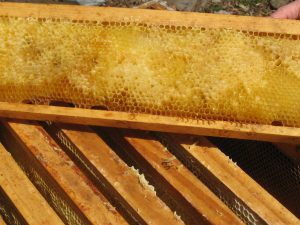
Regularly rotating old comb out of hives is one way beekeepers can reduce toxic chemical loads on bee colonies. The color of the comb is not a reliable indication of the age of the comb, since combs that are only used by the bees or food storage take much longer than brood combs to darken.
Varroa Treatments
The commonly used beekeeping pesticide Amitraz (sold as Apivar) was not found to contain any fluorinated chemicals that would meet the state of Maine’s definition of PFAS. However, Fluvalinate, the active ingredient in Apistan does meet the state’s definition.
I spoke with pesticide toxicologist, Pam Bryer of the Maine Board of Pesticide Control who pointed out that the PFAS problem could easily have been avoided if all chemicals were treated like pesticides which are regularly tested for their persistence in the environment. According to Bryer, “for most of the PFAS out there, there is almost no data.” Bryer assured me that unlike PFOS and PFOA which are long chain fluorinated compounds, fluvalinate is not nearly as toxic since it contains a short chain fluorinated methyl group. She did express concern, however what can happen should the fluorinated methyl group in fluvalinate combine with other chemicals potentially forming more toxic compounds or potent green-house gases.
Better Safe Than Sorry
In my mind, the safest treatments available to beekeepers today are those that utilize organic acids. By definition, the acids are not toxic, though they are corrosive. All of the organic acids (formic, oxalic and hop beta) that are approved for use to control varroa mites become neutralized over time and leave behind no harmful residue from the acid. Unfortunately, we now know that PFAS have the potential to make their way into such otherwise relatively safe products and contaminate our colonies despite our best efforts.
Beekeepers don’t have to wait for regulatory action and should consider increasing their reliance on natural and organic approaches, or when possible, treatment-free management techniques to control mites. As beekeepers, we can reduce or even eliminate toxic chemical use in our hives starting today by incorporating organic practices into our hive management. One way is to regularly rotate old combs out of hives and allow colonies to build new comb so the level of residue buildup in wax remains relatively low. Another approach discussed in my book, Natural Beekeeping, includes the use of screened bottom boards, culling capped drone brood, forcing a brood break in the hive, and propagating strains of bees that show some resistance to mites and diseases. A trial that ran between 2016-2019 found that combining all five of these physical and biological treatment-free management approaches can control mite-related hive mortality and ensure survivability on par with commercially available pesticide treatments (Conrad, 2021).
Recently, researchers Robyn Underwood, Margarita López-Uribe and their team from Penn State and Virginia Tech published a study on organic beekeeping in which they “… found that the organic management system-which uses organic-approved chemicals for mite control-supports healthy and productive colonies, and can be incorporated as a sustainable approach for stationary honey-producing beekeeping operations.” (Underwood et al., 2023).
As Rachel Carson noted over 60 years ago: “The most alarming of all man’s assaults upon the environment is the contamination of air, earth, rivers and sea with dangerous and even lethal, materials. This pollution is for the most part irrecoverable; the chain of evil it initiates not only in the world that must support life, but in living tissues is, for the most part, irreversible.” (Carson, 1962). Given that we now have effective low toxic and non-toxic alternatives to dangerous chemicals, why continue to play Russian roulette with pesticides?
Ross Conrad is author of Natural Beekeeping, Revised and Expanded 2nd edition, and co-author of The Land of Milk and Honey: A history of beekeeping in Vermont.
References:
Carson, Rachel (1962) Silent Spring, The Riverside Press Cambridge, Houghton Mifflin Company, Boston pg 6
Conrad, Ross (2021) Comparison of a commercial Varroa mite honey bee treatment with treatment-free Varroa management techniques, Bee Culture September: pp 41-45
Environmental Protection Agency, Comptox Chemicals Dashboard: Master List of PFAS Substances (Version 2). Accessed June 26, 2023. https://comptox.epa.gov/dashboard/chemical_lists/pfasmaster
Environmental Protection Agency (2023) Our current understanding of the human health and environmental risks of PFAS, accessed June 21, 2023 https://www.epa.gov/pfas/our-current-understanding-human-health-and-environmental-risks-pfas
Environmental Working Group (EWG), Maine data unveils troubling trend: 55 PFAS-related chemicals in over 1400 pesticides, accessed June 13, 2023 – https://www.ewg.org/news-insights/news-release/2023/06/maine-data-unveils-troubling-trend-55-pfas-related-chemicals
Gaines, Linda G.T. (2001) Historical and current usage of per- and polyfluoralkyl substances (PFAS): A literature review, American Journal of Industrial Medicine, 66:353-378
Lasee, S. et. al. (2022) Targeted analysis and total oxidizable precursor assay of several insecticides for PFAS, Journal of Hazardous Materials Letters, 3:100067
Martinello, M. et. al. (2019) A survey from 2015 to 2019 to investigate the occurance of pesticide residues in dead honey bees and other matrices related to honey bee mortality incidents in Italy, Diversity, 12(1):15
McCarthy, C., Kappleman, W. & DiGuiseppi, W. (2017) Ecological Considerations of Per- and Polyfluoroalkyl Substances (PFAS). Curr Pollution Rep 3, 289–301
Steven Lasee, Kaylin McDermett, Naveen Kumar, Jennifer Guelfo, Paxton Payton, Zhao Yang, Todd A. Anderson, (2022) Targeted analysis and Total Oxidizable Precursor assay of several insecticides for PFAS, Journal of Hazardous Materials Letters, Vol. 3.
Sonter, C., Rader R., Stevenson, G., Stavert, J., Wilson, S.C. (2021) Biological and behavioural responses of European honey bee (Apis mellifera) colonies to perfluorooctane sulfonate (PFOS) exposure, Integrated Environmental Assessment and Management, 17(2)
United States Government (2022) Lifetime Drinking Water Health Advisories for Four Perfluoroalkyl Substances [FRL 9855-01-OW], Federal Register 87:118 pp 36848-36849
Underwood, R.M., Lawrence, B.L., Turley, N.E., Cambron-Kopco, L.D., Kietzman, P.M., Traver, B.E., López-Uribe, M.M. (2023) A longitudinal experiment demonstrates that honey bee colonies managed organically are as healthy and productive as those managed conventionally, Scientific Reports, 13:6072 https://doi.org/10.1038/s41598-023-32824-w
Wilkins, P. (2001) “Perfluorooctanesulfonate, potassium salt (PFOS): An acute contact toxicity study with the honey bee. Study number HT5601.”
Click Here if you listened. We’re trying to gauge interest so only one question is required; however, there is a spot for feedback!
Read along below!
Found in Translation
Sweet and Sour Honey
By: Jay Evans, USDA Beltsville Bee Lab
There are many ways that honey bees improve our diets but honey consumption was an early reason to wrangle this species. The taste for honey persists today around the world, sustaining sideliners, families and large corporations in many parts of the world. It is also widely known to soothe and improve relations with neighbors, in-laws and bosses. With any high-value product, there is a risk of inadvertent or purposeful false advertising.
One honey quality trait that is easy to control is water content. Small-scale beekeepers routinely put their honey crops and relationships at risk by bottling honey that hasn’t been fully processed by bees to a net water percentage under 19%. Watery honey both feels weird and is prone to unintended fermentation. Choosing properly capped frames goes a long way to eliminating this problem. If you live in a humid place like Maryland, there is also some risk that open honey will dehumidify some of the local air, pushing water content back above dangerous levels. Truly dry honey can be achieved by technique and awareness, but if you are curious and want to directly assess the water content of your crop, Hanna Bäckmo gives a nice review of the styles and costs of refractometers used by beekeepers in this magazine (https://www.beeculture.com/refractometer/). Certainly, steady honey producers would benefit from investing in, and calibrating, these things.
A bit out of reach for most of us, but essential for the industry, are lab-based assays aimed at confirming honey purity. The methods used for this continue to improve, putting clumsy or sneaky honey producers on notice. Notably, honey yields can be stretched by a variety of refined or expelled sugars. This might be inadvertent, when syrup fed by beekeepers in the Fall for Winter survival lingers, capped until Spring. There is no easy answer to this, certainly not from me, but step one is to get bees through Winter safely, and then assess any remaining capped stores to see if these stores are bona fide honey or syrup that bees dried down but didn’t gobble up as it came in. Ask a beekeeper near you for help.

Photo by Meggyn Pomerleau on Unsplash
More insidiously, producers or packers might outright add less expensive fillers to their honey, increasing yields but losing some of the magic of honey. The technology used to detect such adulteration is improving, and several techniques are now used by regulators, producers and packers to make sure honey is pure. The International Honey Commission described forensic methods for honey purity nearly 30 years ago and updated these methods in 2009 (https://www.bee-hexagon.net/english/network/publications-by-the-ihc/). The U.S. Food and Drug Administration, keeping honest folks honest across the industry, regularly tests new methods against imported and domestic honey to identify so-called ‘economically motivated adulteration’. Using a well-established technique, Stable Carbon Isotope Ratio Analysis (SCIRA), the FDA recently screened bulk and bottled honey samples from eight countries whose honey is imported into the U.S. (https://www.fda.gov/food/economically-motivated-adulteration-food-fraud/fy2122-sample-collection-and-analysis-imported-honey-economically-motivated-adulteration). This test distinguishes ‘C4’ plant sources (largely grasses and grains) from ‘C3’ sources (all the plants with prettier, bee-visited, nectar-rich flowers). The test simply asks if the unexpected C4-sugars, often from corn syrup or sugar cane, are over-represented in honey. There is some tolerance of these C4 sugars due to bee management or assay imprecision but that level is quite low, maybe 7% by volume. Each country in the FDA screen had at least one suspicious honey batch, but the overall frequency of such batches was 10%, a level roughly similar to a much larger recent study in Europe and indicative that honey, by and large, is as advertised.
There are several newer techniques in play now for the high-stakes race between regulators and those who might diminish the reputation of honey. Dilpreet Singh Brar and colleagues in A comprehensive review on unethical honey: Validation by emerging techniques (Food Control 2023, 145, 109482, https://doi.org/10.1016/j.foodcont.2022.109482) describe nearly 50 ways to test your clover. Within the alphabet soup of available methods, they reveal six chromatographic platforms (basically methods to separate parts of a whole by size, electric charge or affinity to some sort of ‘bait’) with increasing sophistication. These machines should put fear in anyone whose honey is not perfectly sound.
As a geneticist, I am fascinated with so-called environmental DNA (eDNA) screens, whereby a complex soup is scrutinized for the genomes of the diverse organisms floating in it. Many will remember the application of eDNA screens worldwide to identify levels and variants of the SARS-Cov-2 virus in city and town wastewater systems (poor interns!; https://www.nih.gov/news-events/nih-research-matters/tracking-sars-cov-2-variants-wastewater). This same methodology is now widely used to confirm the botanical sources of honey, the genotypes of the bees collecting that honey and the myriad of other organisms from the hive environment. Practically, this method also precisely identifies any honey contaminant with a biological source, from corn syrup to diverse flower sources mixed in accidentally in coveted monofloral honeys. It is also a sensitive assay for honey bee disease agents.
For the past 20 years, genetic analyses of honey from hives have been used to confirm the presence of the bacterium responsible for American Foulbrood, Paenibacillus larvae. Federico Lauro and colleagues in Rapid detection of Paenibacillus larvae from honey and hive samples with a novel nested PCR protocol (International Journal of Food Microbiology 2003, 81, 195-201, https://doi.org/10.1016/S0168-1605(02)00257-X) showed the value of this technique for keeping track of non-symptomatic P. larvae populations. More broadly, Leigh Boardman and others have confirmed that this technique can provide a snapshot of the whole range of microbes found in colonies (Boardman, L., P. Marcelino, J. A., Valentin, R. E., Boncristiani, H., Standley, J. M., & Ellis, J. D. Novel eDNA approaches to monitor Western honey bee (Apis mellifera L.) microbial and arthropod communities. Environmental DNA. 2023; https://doi.org/10.1002/edn3.419). Here, colony-collected honey is analogous to the worker-bee samples now used in many disease surveys. Honey collections have the added value of pointing out long-ago arrivals, providing a sort of fossil record for the plants and other organisms a colony might have come into contact with during the past year. The genetic methods behind these screens are astoundingly sensitive (remember, viruses floating alone in tons of sewer sludge) and honey or hive-based screens have promise for anything from virus outbreaks to the detection of newly invasive mites and other pests. It is incredibly hard to pass through an environment without shedding a little DNA, and a little goes a long way for these sensitive methods.
Economically motivated adulteration is detectable with some effort and that’s a good thing for all of us. Honey screening, especially with the twist of identifying genetic signals from hive organisms, is also becoming a nice tool for scientists keen on monitoring disease, plant sources and the genes of the bees that did all the work.
]]>Instead of writing about a pollinator plant, I want to address the weary accusation that somehow honey bees outcompete native bees and “don’t belong here” or “we can do just fine without honey bees.” Lately this controversy has gained steam despite countless research articles showing that honey bees and native bees have been getting along just fine for centuries, thank you. Truthfully, these pollinators supplement each other on our behalf. A study by Greenleaf and Kremen observed that interactions between wild bees and honey bees doubled pollination rates and enhanced the prevalence of hybrid sunflowers by five-fold.
Honey bees have been in the United States since at least 1622, but most likely since the 1500’s when Spaniards established St. Augustine, Florida – USA’s oldest city – to obtain beeswax for their candles. Recent research discovered a fossil of the honey bees’ relative Apis neararctica spp., in Stewart Valley, Nevada that dated back to the Miocene Era. So, the honey bees have been getting along with native bees for centuries!
So, what has changed? Mankind, or not-so-kind. As areas are bulldozed and stripped of woods, fields, wetlands and streams, the insects, birds and other wildlife lose places to nest, find food and shelter and exist. Pristine lawns and tidy shrubs do not provide habitat for most pollinators, let alone other wildlife. 50 million acres of perfect suburban lawns in the U.S. doesn’t help. An environmental ‘black hole’.
Honey bees are generalists with short tongues, meaning that they prefer flowers with shallow centers so that they can access the pollen and nectar easily. They like the flowers of many trees, shrubs, perennials, bulbs and annuals, including some non-native “weeds” like Japanese honeysuckle, Autumn olive and spotted knapweed. Generally, they are active on sunny days when the temperature is over 60°F, and back in the colony by evening to cool or warm the colony.
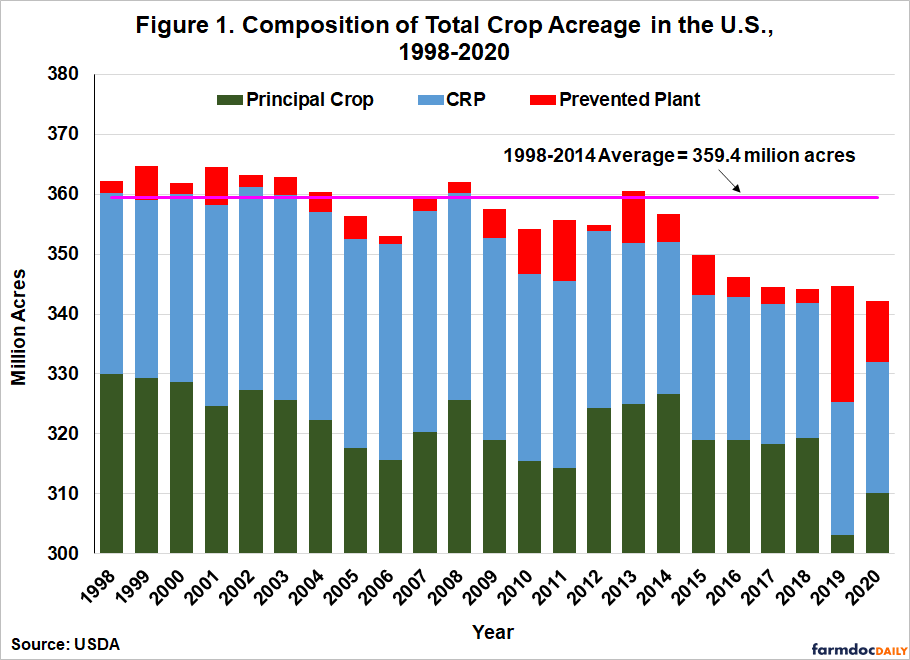
Prevented planting is a failure to plant an insured crop with the proper equipment by the final planting date designated in the insurance policy’s Special Provisions or during the late planting period, if applicable. https://farmdocdaily.illinois.edu/2021/06/estimating-total-crop-acres-in-the-us.html
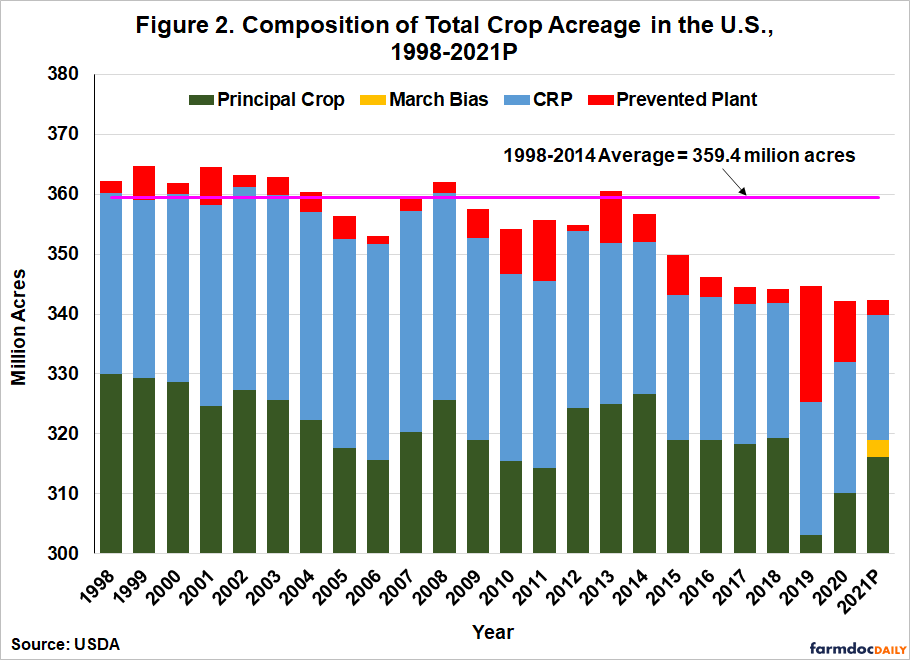 Native bees have specific preferences for plant species, for instance leafcutter bees pollinate alfalfa, canola, cranberries, onions, peas, blueberries and various other vegetables and melons. Bumble bees visit larkspur, iris, columbine, as well as tomatoes, peppers, blueberries, cranberries, broad beans and other “long throated” flowers. Several species of bumble bees are used in greenhouses, but they are expensive to order and maintain the many colonies that are needed inside these closed CEA’s (Controlled Environment Agriculture). Many native bees have long tongues and visit specific wildflowers.
Native bees have specific preferences for plant species, for instance leafcutter bees pollinate alfalfa, canola, cranberries, onions, peas, blueberries and various other vegetables and melons. Bumble bees visit larkspur, iris, columbine, as well as tomatoes, peppers, blueberries, cranberries, broad beans and other “long throated” flowers. Several species of bumble bees are used in greenhouses, but they are expensive to order and maintain the many colonies that are needed inside these closed CEA’s (Controlled Environment Agriculture). Many native bees have long tongues and visit specific wildflowers.
The squash bee is specifically designed to pollinate squash flowers but requires soft soil at the edge of the field in which to dig five to eight inch deep tunnels in which to deposit pollen and lay eggs. Although efficient at pollinating many cucurbit flowers, they only fly a quarter of a mile from their soil tunnels. If the edges of the field are treated with herbicide, plowed or mowed, the squash bees will not survive.
Mason bees are Spring time pollinators. They emerge from tubes or stems in early Spring and are mostly finished by early June. They only fly 100-300 yards from their nests. Leafcutter bees cut those curious perfectly round circles in redbud and rose leaves which they use to fold into cups to place eggs and pollen bundles into stems, holes in wood or the ground. They are active in mid-Summer (70°F) and pollinate flowers within 100 yards of their nest. Obviously, none of these bees can cover the tens of thousands of acres of orchards, fruit, vegetable and soybean fields in the United States alone.
Other pollinators such as syrphid flies, moths and beetles are far less efficient because their bodies are not hairy nor do the bodies have much contact with the pollen or stigmas. In fact, the USDA showed that the pollination services of non-Apis pollinators were valued at USD $3.44 billion, while honey bees contributed approximately $15 billion in the USA. Honey bees are responsible for pollinating over 80% of all flowering plants and 130 types of fruits and vegetables in the U.S. alone.
 Perhaps the most obvious point to the argument is that honey bees are by far the most efficient pollinator that can withstand regular management and long-distance trucking. What other insect can you pick up its nest, put it on a semi truck, drive it bouncing along for hundreds and hundreds of miles, unload it and have it still be alive, readjust to the new environment and go out and search for pollinator dependent flowers?
Perhaps the most obvious point to the argument is that honey bees are by far the most efficient pollinator that can withstand regular management and long-distance trucking. What other insect can you pick up its nest, put it on a semi truck, drive it bouncing along for hundreds and hundreds of miles, unload it and have it still be alive, readjust to the new environment and go out and search for pollinator dependent flowers?
Honey bees pollinate $20 billion worth of crops in the United States each year, including more than 130 types of fruits, nuts and vegetables. This of course, is in addition to the $3.2 million’s worth of honey produced in 2017 (USDA-National Agricultural Statistics Service (NASS)), beeswax, royal jelly, pollen and propolis that is harvested. Honey bees possess “flower fidelity” in that they will visit 50-100 apple blossoms, onion or carrot flowers or clover flowers in one trip instead of going to an apple flower then a clover then a mustard bloom, therefore the flowers visited by honey bees benefit by receiving only pollen from its cultivar or species, receiving maximum pollination. They can be placed in orchards or fields as needed to supply pollination for the entire field, then moved to meet the demands of another crop. Beehives are often important elements of urban gardens due to the pollination services they provide for backyard and community gardens, wildflowers and parks. Thanks to honey bees, birds, insects and many animals thrive on the fruits produced from the work of the honey bees.
Currently, 330 million people live in the United States with an estimated count of 400 million by 2050. Since 2000, the total area of farmland in U.S. has decreased annually. In that period, the total farmland area has decreased by almost 50 million acres, reaching a total of 893.4 million acres as of 2022. For the first time, the United States has imported more food than it has exported, meaning that we are depending upon other countries for food. In the monoculture system common in the U.S. and other advanced countries, honey bees are crucial to provide the pollination needed to feed animals and people. A study by Ritchie showed that crops are not pollinated sufficiently and that populations in many countries (including the U.S.), are undernourished due to insufficient pollination. Instead of arguing about honey bees or native bees, we should be concentrating on finding ways to keep farmland in production and provide more habitat for all pollinators.
References
https://ohioline.osu.edu/factsheet/ent-85
https://www.usda.gov/peoples-garden/pollinators/honey-bees#:~:text=Honeybees%20pollinate%20%2415%20billion%20worth,fruits%2C%20nuts%2C%20and%20vegetables
https://www.statista.com/statistics/196104/total-area-of-land-in-farms-in-the-us-since-2000/
https://www.ncbi.nlm.nih.gov/pmc/articles/PMC8396518/pdf/insects-12-00688.pdf
https://www.usda.gov/sites/default/files/documents/Attractiveness-of-Agriculture-Crops-to-Pollinating-Bees-Report-FINAL-Web-Version-Jan-3-2018.pdf
Click Here if you listened. We’re trying to gauge interest so only one question is required; however, there is a spot for feedback!
Read along below!
Found in Translation
Gut Microbes Help Bees Survive the Season
By: Jay Evans, USDA Beltsville Bee Lab
It will surprise most Bee Culture readers that microbes come in flavors that can be good, bad or indifferent to the health of their honey bee hosts. As we approach Fall, it is tempting to focus on the microbes on the good side and try to find out how to feed them for bee health prior to Winter. As someone who studies honey bee disease, I can’t help but focus on the good microbes that might interfere with agents of harm lurking in our beehives.
Kirk Anderson and colleagues in the USDA’s Tucson Carl Hayden Bee Research Laboratory have been exploring the impacts of gut microbes on bee health for a decade now. In past work, they showed how these microbes are beneficial in the guts of bees but generally ‘don’t’ help in the processing of pollen stored as bee bread. They have also shown how queens and workers differ greatly in the microbes they harbor and the impacts of bee contact on moving microbes around (see Anderson’s ‘Google Scholar’ profile for lists of his papers on these topics; https://scholar.google.com/citations?user=JiEFFkIAAAAJ&hl=en&oi=ao).
They have also explored how bees suffer mortality when the delicate microbial balance is upset. Recently, they have investigated honey bee overwintering, testing for the right mixes of nutrition and temperature that improve the odds of colony survival (hint: cold is good, to a certain degree). In a paper this past year, they describe how the gut microbes of bees react before and during Winter, building the case that microbes are critical for overwintering success (Anderson, K.E.; Maes, P. Social microbiota and social gland gene expression of worker honey bees by age and climate. Scientific Reports 2022, 12, 10690, doi:10.1038/s41598-022-14442-0).
They also show that the overwintering environment can favor certain microbes that are less helpful for bee health. Specifically, bee colonies overwintered in a warm environment started with the typical population of gut bacteria but that population broke bad in the end, notably thanks to overgrowth (these were NOT found in bees) as well as several types which ARE known to decrease bee health. Just what it is about warmer Winter environments that favors an odd, and apparently harmful, bacterial group is not known, and solving this will be key in future work aimed at prepping bees for current or future Winter climates.
More generally, disease agents are opportunists; taking advantage of their victims when something else is out of whack. These opportunities can arise from stressors in the environment, poor genetics or inadequate nutrition. Opportunities might also arise when populations of good bacteria are somehow absent. There are a myriad of ways that such ‘good’ microbes could help bees in the face of disease, from providing a physical layer on the gut wall that frustrates pathogens, to improving nutrient transfer or stimulating bee immunity.
Finally, gut microbes might directly attack the bad actors. Studies showing increased honey bee disease following heavy antibiotic treatments provide ample evidence for the roles of natural bee bacteria. In one such study, led by Jiang Hong Li and my USDA colleague Judy Chen (Li, J.H.; Evans, J.D.; Li, W.F.; Zhao, Y.Z.; DeGrandi-Hoffman, G.; Huang, S.K.; Li, Z.G.; Hamilton, M.; Chen, Y.P. New evidence showing that the destruction of gut bacteria by antibiotic treatment could increase the honey bee’s vulnerability to Nosema infection. PloS one 2017, 12, e0187505, doi:10.1371/journal.pone.0187505). Gut microbes were shown to help bees resist nosema disease. A cleansing of gut bacteria by an intensive antibiotic regime resulted in shorter lifespans overall, and increased the impacts of nosema exposure on longevity.
Sean Leonard and colleagues, in the University of Texas laboratory of Nancy Moran, showed that a human assist can further sharpen the impacts of natural gut microbes on bee parasites. Specifically, they engineered (in the laboratory) a common ‘good’ bacterium of bees so that it targeted challenges as distinct as Varroa mites and Deformed wing virus (Leonard, S.P.; Powell, J.E.; Perutka, J.; Geng, P.; Heckmann, L.C.; Horak, R.D.; Davies, B.W.; Ellington, A.D.; Barrick, J.E.; Moran, N.A. Engineered symbionts activate honey bee immunity and limit pathogens. Science 2020, 367, 573-576, doi:10.1126/science.aax9039).
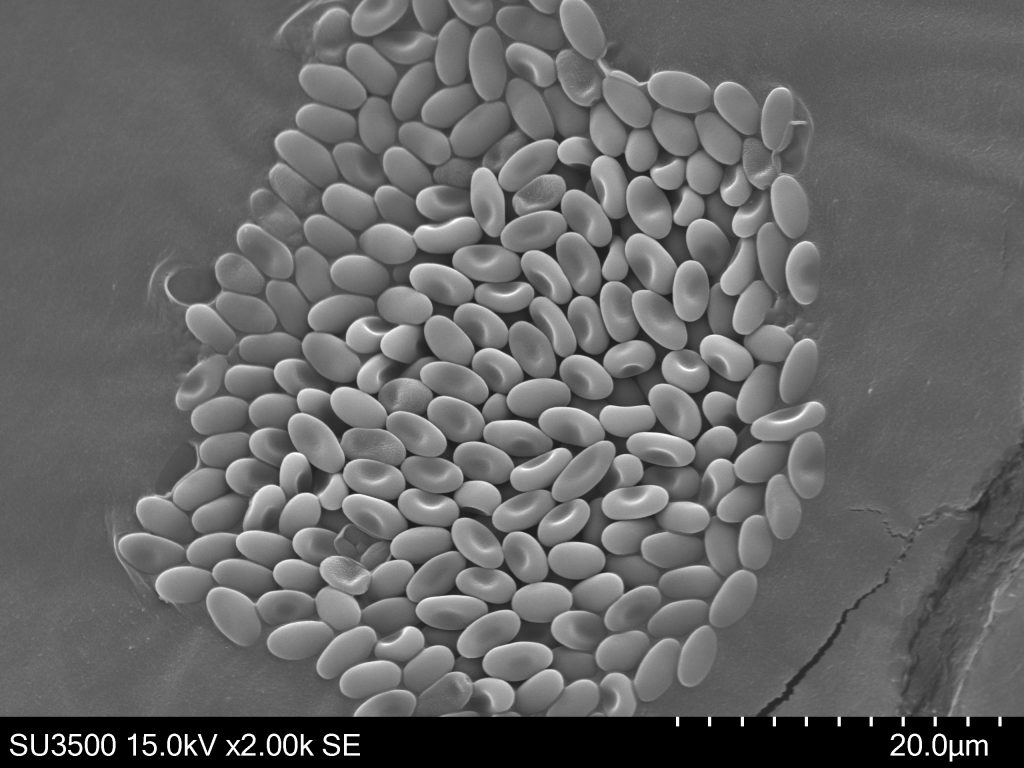
Nosema. Credit: Qiang Huang
Work this year based on the same strategy (led by Qiang Huang from Jiangxi University, working in Moran’s lab) showed resident bacteria could be altered to successfully target nosema disease (Huang, Q.; Lariviere, P.J.; Powell, J.E.; Moran, N.A. Engineered gut symbiont inhibits microsporidian parasite and improves honey bee survival. Proceedings of the National Academy of Sciences 2023, 120, e2220922120, doi:10.1073/pnas.2220922120). Bees with the engineered bacteria both lived significantly longer and had far fewer nosema spores to pass on to their nestmates. Interestingly, bees fed the gut bacterium alone, and the bacterium with a nonspecific (not targeting nosema), modification also showed signs of reducing disease impacts, supporting the evidence that the bacterium itself is also a friend to bees.
Short of this high-tech solution, are there ways that beekeepers can help nurture the natural gut bacteria found in their beehives? If you supplement your bees, a recent paper by Elijah Powell and others in Moran’s group suggests that pollen-based supplements tend to lead to a more balanced ‘core’ set of bacteria in the bee gut, possibly decreasing the threats from at least one bacterial pathogen of adult bees (Powell JE, Lau P, Rangel J, Arnott R, De Jong T, Moran NA (2023) The microbiome and gene expression of honey bee workers are affected by a diet containing pollen substitutes. PLoS ONE 18(5): e0286070. https://doi.org/10.1371/journal.pone.0286070). I know there are many colony supplements available and I don’t claim this makes a pollen-based supplement better for bees overall than supplements with a different protein source (nor, of course, does this represent any formal endorsement of one type of bee feed over another). Still, it is interesting to contemplate how particular supplements affect not just bees but the hitchhiking microbes that have adapted to life in their guts.
One thing is clear from these diverse studies. While many of us focus on the microbes whose effects are damaging to bee colonies, most hive microbes are neutral or even beneficial to their bee hosts in Summer and Winter. Bees have been harnessing this power for millennia, and we would do well to help them sustain the right mix of gut partners.
]]>Click Here if you listened. We’re trying to gauge interest so only one question is required; however, there is a spot for feedback!
Read along below!

Beekeeping
A Path to Some Economic Freedom
By: Ross Conrad
The economic upheaval of the recent COVID years has revealed weaknesses in our economic system and many of the unsung benefits we beekeepers can enjoy from practicing our craft. We saw what’s been called the “Great Resignation” where workers left their jobs in droves. One of the primary reasons employees quit was due to the way employers treated them. For others, it was the company culture and values that did not align with their own. For those stuck in dead-end jobs, the COVID Economic Impact Payments provided the financial buffer they needed to transition into a new working situation. The dramatic decrease in unemployment made it challenging for employers to hire help, but made it much easier for workers to leave lousy jobs. The ruling and economic elite hate low unemployment because then workers have options and it makes it too easy for them to leave their jobs for a better one. This also puts upward pressure on wages which decreases profits. Far too many employers rely on the Federal Reserve’s efforts to manipulate interest rates and keep living expenses high enough so people’s savings will get used up and there will be plenty of desperate workers willing to accept jobs that they normally would not take. The Fed also works to keep unemployment high enough so most workers would not dare to leave their jobs, no matter how bad they are, because there are lots of financially hurting people waiting in the wings to take their place and there is so much competition for work that getting a better job is difficult.
Higher interest rates put the brakes on the housing market but apparently too many consumers still flush with cash saved up during the pandemic continue to spend. When discussing the Fed’s increases in interest rates on the November 2, 2022 airing of National Public Radio’s Morning Edition, the President of the Federal Reserve Bank of Kansas City, Esther George, stated, “We see that there is a bit of a savings buffer still sitting for households, that may allow them to continue to spend in a way that keeps demand strong,” she said. “That suggests we may have to keep at this for a while.”
NPR’s Morning Edition also interviewed Federal Reserve Chair Jerome Powell who stated: “No one knows whether there’s going to be a recession or not, and if so, how bad that recession would be… Our job is to restore price stability so that we can have a strong labor market that benefits all, over time.” Of course, Powell’s idea of a strong labor market is one where there are lots of people out of work so that employers have no problem finding workers for jobs that offer poor pay and few-to-no benefits. The “all” that benefit from the price stability of more people out of work due to higher interest rates is the business class, not the majority of the people who work for a living.
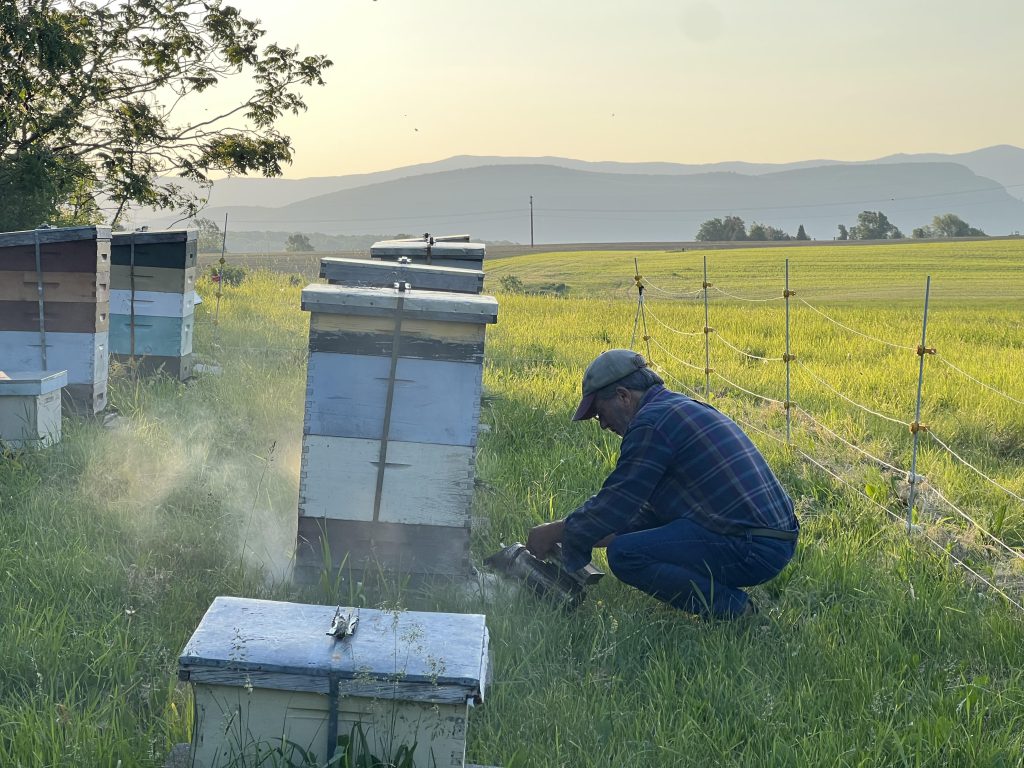
While most beekeepers are backyard part-timers with a few hives, a small percentage of beekeepers make a part-time, or full-time, business of beekeeping, and it is these beekeepers that account for the majority of managed honey bee colonies.
In honey bee economics, each individual bee’s efforts are primarily aimed at supporting the common good of the whole. No worker tries to monopolize hive resources and control or restrict access to the rest of the colony for their own personal gain. With a few notable exceptions, most of human culture that’s dedicated to the capitalist economic system works in the opposite way of a honey bee colony. Greed is promoted and rewarded. Monopolization, consolidation of power and control of the market is the goal, and employees are seen as an expense that should be minimized as much as possible, and are too often considered disposable. Unskilled laborers in particular are treated with little respect and dignity.
Of course no employee ever gets paid what they’re actually worth. The system is designed so that a company must purchase your labor wholesale so they can sell it retail. We have all been well indoctrinated into accepting this situation as the natural order of things but it took a long time to get us to this point. The first factories to open up and hired unskilled laborers at the dawn of the industrial age were greeted with strong opposition and protests from the populace. Rather than a person using a skilled craft to produce something useful that they could then sell or barter, individuals traded their time for money doing jobs that most anyone could do with a little training. Folks back then saw this for what it was, treating people with disrespect and compromising their independence and dignity.
People believed there was little difference between being a factory worker and a slave. Of course the factory worker’s situation is supposed to be voluntary and temporary since they can choose to quit at any time. Unlike a slave that the slave owner has to house, feed and clothe, the factory worker is expected to use their meager earnings to purchase their own accommodations and necessities and hope there is enough left over for a little discretionary spending.
To prevent employees from scrimping and saving so they can afford to eventually leave their jobs, companies took a page from indentured servitude farmers and establish company stores to provide their employees with goods, and built lodging to rent to workers, all at rates designed to ensure they could never afford to leave.
There are those who argue that working for others provides great benefits such as a reliable working situation, a greater sense of one’s basic needs being provided for which can instill a sense of personal security and stability, and not having to take the financial risks of running your own business. While this is all true, much of the same can also be said of slavery.
As far back as 44 BC, Cicero is quoted as saying “vulgar are the means of livelihood of all hired workmen whom we pay for mere manual labor, not for artistic skill; for in their case the very wage they receive is a pledge of their slavery.”
When Fredrick Douglass took a paying job, he is reported to have declared “Now I am my own master.” After life as a slave, receiving a wage that you can decide how to spend can feel like you have some level of freedom. Only later did he realize to the contrary, “experience demonstrates that there may be a slavery of wages only a little less galling and crushing in its effects than chattel slavery, and that this slavery of wages must go down with the other.”
Through a craft like beekeeping, one has the opportunity to escape wage slavery, choose their own hours and make their own decisions. Sure they take on all financial risks, but they also get to enjoy all the financial benefits. Beekeepers may not become millionaires from their efforts, but there is immense satisfaction that comes from being your own boss and living the agrarian lifestyle.
We have become well indoctrinated into maintaining capitalism and identifying with it as our means of survival for so long, that the idea of people working together, rather than competitively, to meet their collective needs like in the example of the bee hive, seems improbable if not impossible. What would we get in return for our selfless efforts to help maintain each other’s existence?
One well established economic model inspired by bees and the rest of the natural world comes in the form of the cooperative business. Work that is not based upon individual craft work can be organized by worker self-management. An example is Sioux Bee Honey, a beekeeper owned co-operative that notes on its website: “One bee can’t do it all, neither can one farmer. It’s why five humble beekeepers from Sioux City, Iowa, formed a co-op to share equipment and resources to bring more honey to market. It’s a way of doing business where family farms stay in the family and decisions are made democratically.”
Like all farming, beekeeping provides the foundation for a strong and resilient economy by creating new human centric wealth from the communal wealth of the natural world. Almost all other businesses and economic activities simply reorganize human centric wealth that already exists in order to extract more wealth, but farming in general and beekeeping specifically, combine sun, air, water and earth with the efforts of a bee colony to create new wealth (e.g. honey, beeswax, etc.) that did not previously exist. This is why agricultural revolutions must come before industrial or economic revolutions.
Beekeeping provides self-employment and all the social and economic benefits that go with it. The greatest advantage is throwing off the yoke of wage slave employment in our increasingly volatile economy and not being subject to the whims of “at will” employers. You also get to write-off legitimate beekeeping expenses on your tax return, reducing your tax bill so you get to keep more of your hard-earned money.
Beekeeping also appears to be somewhat technologically future-proof. The nature of beekeeping work suggests that despite current efforts to replace humans with robots and artificial intelligence in many areas of the economy, beekeeping is unlikely to ever become fully automated. There is a long list of technological promises like the paperless office that computers were supposed to create, less toxic pesticide use thanks to genetically engineered organisms, and electricity from nuclear power plants that is too cheap to meter, all of which never came to fruition. Sure there are sensors and gadgets we can use to monitor hives and provide real-time data on colonies, but a human being knowledgeable in honey bee management, biology, pests and pathogens, along with a working knowledge of meteorology and apiary goal considerations will still be needed to analyze the data and determine the best course of action to take, as well as carry out the necessary physical hive manipulations in the field.
When planned accordingly, beekeepers have a better chance of avoiding on-the-job burnout by freeing up some of their time, since unlike other farm and domesticated animals; bees do not need daily attention. Of course a beekeeper can keep so many colonies that they end up working seven-days-a-week, but a beekeeper can enhance their time flexibility by choosing to keep the number of colonies down to a manageable amount that can be worked within whatever number of days a week the beekeeper wants to work on a regular basis.
A little bit of economic freedom, allows you to make choices. We, who live in the highly developed countries of today, have choices unparalleled in the history of mankind. We can chase after money and be incredibly wealthy, get an amazing education, choose to be lazy, or try to make the world a better place. We have many choices but to exercise those choices it helps a lot to have some economic freedom. Beekeeping is one way to provide some of that freedom.
Ross Conrad is the author of Natural Beekeeping, Revised and Expanded 2nd edition, and The Land of Milk and Honey: A history of beekeeping in Vermont.
]]>Click Here if you listened. We’re trying to gauge interest so only one question is required; however, there is a spot for feedback!
Read along below!
 Keeping Beeyards on Trailers
Keeping Beeyards on Trailers
“Mobile Beeyards”
By: James E. Tew

Figure 1. Jeff Ott, Beekeeper, Podcaster and conversationalist.
Trailering Bees
I recently chatted with Jeff Ott, an experienced beekeeper about trailering bees (Edited comments taken from “Bee Trailers – The Portable Bee Hive” podcast, Honey Bee Obscura, May 18, 2023. Podcast #126. https://www.honeybeeobscura.com/bee-trailers-the-portable-bee-hive-126/). I recorded the conversation and transcribed it for you.
Jim: I must have five trailers right now, and before anybody says, “Oh, my stars!” you should know that they’re all small. I’ve got anywhere from really small trailers that go behind my small tractors all the way up to two bigger trailers that I can tow behind my truck.
At one time or another I have had bee colonies on every one of those trailers. It’s been my experience, as an older beekeeper, that I want wheels or rollers on everything in my bee life.
When moving hives for pollination, even as a younger man, I was eager to use trailers. Is there any way that I can use a trailer and not have to take these colonies off this truck, set them down, go back eight to 10 days later, and do the whole thing over again? It’s a vast amount of work to load and unload hives.
An immediate question for the grower is, “Can I just put these hives on a trailer and then unhook it and be gone?” Many times, the growers would stand their ground and require me to set colonies throughout the orchard. That was a lot more work and it is easier to lose a colony in tall grass.
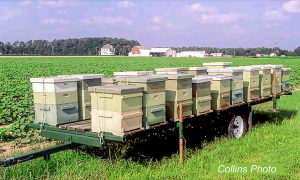
Figure 2. A commercial beekeepers’ trailered hives for pollinating cucumbers.
Jeff: The big guys, have their front-end loaders and pallets and they’re all set to do this kind of in-and-out type of beekeeping and pollination or whatever you’re doing. All the while, moving from one location to another while following the bloom, so to speak. Smaller beekeeping operations can’t afford the front-end loaders or skid loaders, and the trailer becomes a viable option. There’s a lot to consider when you’re looking at a trailer for hauling bees.
Jim: Right off the bat. You almost said it, I was waiting for it – right off the bat, “Why would I use a trailer of any size?” My immediate response is because they are generally much lower to the ground than my pickup or a larger truck. I don’t have to pick the colony up or lift the colony as high off the ground.
Yes, I can use ramps on the tailgate of the truck, but do you want someone to make pictures of you when you’re trying to pull that beehive up those ramps – backwards – into the truck? That foot and a half or so height difference really matters. If you got the right trailer, it may actually have loading ramps that are built on the back of it.
Jeff: Yes.
Jim: I find it much easier to load a trailer with bees than I do to get them up in my truck or, in the old days, on a flatbed truck, and then get them back off.
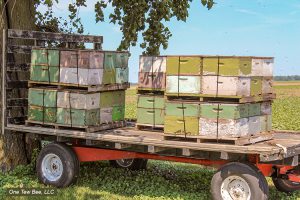
Figure 3. A hybrid-looking system using a front-end loader to set hives from the truck onto a farm wagon for distribution around the planting.
Jeff: No, it only takes once or twice of trying to load a heavy beehive into a back of a pickup truck before you realize this won’t work as a regular event. It’s good for once or twice when moving a beeyard. If you’re doing on a regular basis, the trailer really comes in handy and the lower to the ground – within limits – the better.
You have to take into consideration where your beeyards are located. If you’re doing pollination contracts or following the bloom, then you have to consider ground clearances. That becomes a whole different factor in trying to decide what trailer you want.
Jim: If you’re going to unhitch the trailer and then back it up again, yes, the beekeeper wants to know if the yard is level. Is the yard solid? In a perfect bee world, the sky is always blue, birds are always singing, and bees are always happy, but the common reality is that it’s 2:30 in the morning, the dew has fallen, the truck’s slipping on the grass, and you can’t see the hitch. You’ve got no one to help you because you’ve got no friends, Jeff. You’ve already been through all of them years ago. The devil is in the details.
Jeff: The only friends you have at that time is mosquitoes. They’re all over you.
Jim: [laughs] They’re not friends. They’re just there at the same time. I do want to put this in our discussion right now. If you haven’t done it, you are probably going to do it.
Here’s the situation. If you’ve got a smallish, single axle trailer, you listened to a podcast or you read an article somewhere, and you bought a trailer. Now it’s time to return and hitch it back to the truck. When that trailer is not hitched to the truck and the hives are not situated right over the axle, or even better, nearer the front of the trailer, the tongue will fly up in the air because you suddenly put your body weight on the back of the trailer. The axle, serving as a fulcrum, with the hives in the center, will tilt up. Suddenly, you’ve abruptly got your bees unloaded. They’ll come sliding down that trailer towards you. So, hitch the trailer to the truck first. Then work with the colonies. All those years ago, that brings me to the very next point, if possible, that the towing vehicle should be a four-wheel drive vehicle.
Jeff: Your towing vehicle?
Jim: Yes, your towing vehicle should be four-wheel drive. Like I said, the world’s not always perfect. Sometimes it’s rainy and muddy. You’ve mentioned pollination work. In fact, I’ve moved hives most of the time not for pollination work, but for management reasons.
For instance, I had a couple of hives that wouldn’t stop stinging the whole neighborhood. The move was not a huge one. This was just a move of two colonies. I’m really going to have trouble finding someone to help me move them. I still used the trailer because I’ve got bees that are stinging everyone in sight requiring me to work alone.
So, I still used the trailer – massive overkill – just removing those two genetically angry colonies to a location 40 miles away. The funny part of this story is that a bear found those two colonies. Eastern Ohio beekeepers had not had a bear-sighting in about 100 years. I almost got my name in the local newspaper. The bear destroyed those two colonies. I wrote about this in an earlier article.
Now, you’ve got a four-wheel drive truck and just a single axle trailer, maybe 12 to 14 feet long, and you’re going to take it to a beeyard. That yard must be able to take that kind of rig turning around, backing up, getting out. A lot of beeyards will not work well for trailering your bees just because you’re going to have to do some sophisticated driving and backing if the yard is too small.
Jeff: It needs to be able to handle it with a loaded trailer. A lot of times an unloaded trailer sits differently than a loaded trailer. You can get in there but you can’t get out or you get it loaded up, but you can’t get backed up. You need to put these characteristics in consideration.
When I had horses, I always used a gooseneck trailer. I love gooseneck trailers. Regarding trailers for bees, do you prefer a gooseneck trailer or a bumper hitch? Secondly, how many axles should the trailer have? One or two? Two axles is a lot more stable and you don’t have that fly-up of the hitch that you have a concern with a single axle. What’s your experience on that?
Jim: I have some guesses, some opinions, and some experience.
Jeff: Sure.
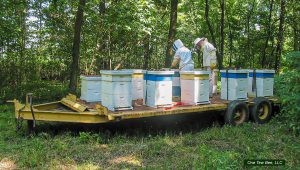
Figure 4. A heavy duty trailer with brakes and a pentel hitch on two axles.
Jim: The two-axle trailer is probably going to have brakes on it, so that really helps. Even a loaded single axle trailer, medium size, 16 feet long with 15, 20, 30 colonies of bees on it, it’s going to really push the truck. You, the driver, must realize that the stopping distance is going to be greatly increased to stop the truck. Double-axle trailers usually have brakes – surge brakes on the tongue – or something like that.
Secondly, those larger trailers are also heavier making it a different concept. More pressure on you the driver and more gas consumption. They are more stable, but there’s a limit on what weight you can put on the bumper hitch.
I pulled a trailer, loaded with good junk, all the way from South Alabama to Northeast Ohio. I didn’t notice until I was backing down my home driveway that my bumper had twisted downward on the truck making my bumper position at about a 35-degree angle. The bolts that held the bumper to the truck frame had slipped.
I was home, but I still had a fearful moment there. What if the bumper had come off? It’s a bumper hitch, so the trailer could have come loose from the truck.
Now, having gotten to this point, I have not routinely used a gooseneck. I’m going to have to depend on you. We’ve used horse trailers and made them work for moving the equipment primarily, but I never used a gooseneck trailer of any kind for moving hives. It was always a bumper hitch or a heavy-duty pentel hitch. You tell me what was involved when hooking up that gooseneck to the truck. You said it was more stable, easier to back. How difficult was it to attach a gooseneck trailer to the truck?
Jeff: It’s a much more stable ride in the wind. That trailer attached as a gooseneck is a much more secure trailer. Backing was a lot easier. It’s more natural, more intuitive, when backing. Even lining up the hitch and hooking it up was easier because, in most cases, you could see it up to the final second to the hitch the trailer in the middle of the truck bed. I understand some of the new trucks now even have a camera looking at the center of the bed of the truck. Even lining it up with a camera is just like many cars now with a backup assist. The downside is that these trailers are more expensive.
Jim: Jeff, I’ve got a question that I guess I’ll check out after we finish this conversation, but right now, can you tell me, what’s the different between a trailer and a wagon?
Jeff: When you say wagon, the only thing I can think of is it says Radio Flyer stamped on the side, or it’s being towed behind a tractor loaded full of hay.
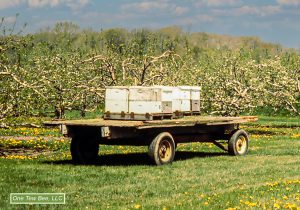
Figure 5. Pollination hives on a hay wagon. This was not a suitable trailer for the open road.
Jim: That’s exactly where I was going. Years ago, I thought I had a bright idea. I took some of the university hay wagons – they’re just very utilitarian devices – and put pollination hives on them. I nailed the pallets and the bottom boards to the deck of the trailer and then put the colony components on the nailed bottom boards. It really made a secure ride. These hives are staying on that trailer. All I had to do was keep the outer covers on.
What’s fundamentally wrong with this? Answer? By the time I got where I was going, I had a load of the angriest, most upset bees you’ve ever seen, and I realized on the trip that you can only go about 20 miles per hour. A hay wagon has no suspension system on it. It’s a slow wagon with a rough ride.
I’m hypothesizing that the difference between a trailer and a wagon is the suspension system, or the lack of it. If anybody has any interest in using a hay wagon, you’re going to have to go at 15-20 miles per hour. If you go much faster, you’re going to be bouncing bees all over the community because there’s not enough weight to settle the trailer out – even if you run the tire’s half slack. That hay wagon idea blew up on me. I was not able to use those simple farm wagons as a bee-moving device on the highway. They work fine within the orchard.
Jeff: Interesting.
Jim: When you mentioned the horse wagon a bit ago, the horse trailer, you wandered into a different arena. Those are enclosed trailers. Cargo doors close them up. I had a shock years ago using a cargo truck (not a trailer) with fold-down doors. I want to tell you it’s really easy, even when the temperature outside was in the 20’s, to overheat that load of bees in an enclosed container.
You’re bouncing them, you’re jostling them, they’re upset, they’re confined. They’ll begin to get worked up and generate heat. It was shocking to have those colonies overheat when the outside temperature was so cold. Now, as I said, that was not a trailer, but an enclosed box truck. Though it’d be the same situation with an enclosed trailer.
My situation was laughable. I had to stop at one of those all-night food stores and buy all the ice they had. While it was frigid outside, I had to put ice on those colonies to calm them down. If you use an enclosed trailer, even on a cold day, you can still overheat the colonies and suffocate them because of the jostling effect that they’re going through with all of that.
Jeff: Not to go off on this tangent but that story reminds me of the time I was in Georgia, and I did a couple of articles on Wilbanks Apiaries. I was doing an article for Bee Culture, and I was talking to the owner. He showed me around his queen-rearing facility. Of course, he does a lot of packages and he had specially designed trailers for moving packages of bees. They were temperature controlled. He can control the temperature inside that enclosed trailer for his bees, which was an interesting concept, but addresses the concern or issues that you faced.
Jim: The reason I’m on this tangent is because of the same thing. A fellow beekeeper here, who contract-hauls packages every Spring, has an environmentally controlled trailer with doors, fans, vents and thermocouples, because he basically says the load is critical. You can insure the trailer, and you can insure the truck, and carry medical insurance – but you can’t insure the live bees. If you overheat those bee packages, that’s a disaster. In his enclosed trailer he’s towing, he knows exactly what’s happening, temperature-wise, from the cab of his truck.
Jeff: That’s smart. Speaking of enclosed trailers, one of the things that I think you’ve seen, and all beekeepers have seen these days, some people and especially in Europe, they are using trailers and AZ-type hives to move bees around.
Jim: Isn’t that interesting. I’ve only seen pictures of that.
Jeff: I look at that and what I know of AZ hives, I think, boy, that would be really a great way of doing things. I still to this day like the idea of putting beehives on a trailer to make my life easier as a beekeeper, a better beekeeper, and the AZ hives could be a good way to go. Putting all of that into a trailer would be fantastic.
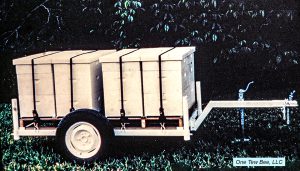
Figure 6. A custom trailer, with a detachable deck, designed to haul eight hives.
Jim: I want to go a little bit deeper down this rabbit hole that you’ve started. [laughter] About sixty years ago, a USDA researcher designed a trailer that allowed the platform bed to be jacked up and taken off the mobile trailer frame. You put four legs down on each corner of the platform, jack the platform up, and raised the platform, with the hives, off the mobile frame of the trailer. Then pull that frame out from under the platform and off you go. You took this strange looking, partial trailer-frame behind you leaving the platform and the hives at the cucumber field.
Jeff: That’s like the container trailers that we see in the Pacific Northwest all the time. I’m sure they’re everywhere. You see those without the container on them. It’s just a frame with wheels.
Jim: Yes.
Jeff: I like that idea.
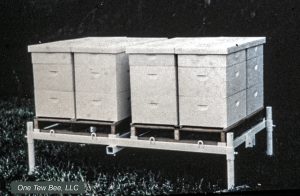
Figure 7. Platform unloaded from the trailer frame.
Jim: Let me tell you where it went. Let me tell you [laughter] why the researcher said you don’t see such bee trailers. When you’re going back to get your platform and its night and the truck’s slipping, everything must be lined up exactly straight. If the mobile frame strikes either one of those back legs, the platform dumps the colonies off the bed.
Jeff: Oh my gosh!
Jim: This very event happened and about 40 colonies either shifted or fell from the trailer deck. He had some pictures of that 40-colony load of bees on that platform, tilted to one side where he accidentally struck one of the back legs. He decided the risk was too great. The idea died.
Now there’s a Chapter Two to this saga. Years ago, I gave this same description to a beekeeping audience. To me, the audience is all beekeepers, but in reality, they’re candlestick makers, soldiers, and sometimes even airline pilots. My point is that they are a blend of people with a myriad of talents. I didn’t know I was talking to two professional welders. From my lecture description, they made that very trailer design, but on a much smaller scale. They took the rear wheel hubs from an ancient Oldsmobile Toronado. That was one of the first front-wheel drive cars.
You would lower pipe legs on the corners of the trailer bed and raise the deck off the frame. There’s ways to do that, but I won’t go into it. Then, with the deck picked up, the wheels are off the ground. You pull out a pin, pull the wheel hubs off, put those in the back of the truck. The tongue was also detachable. You put that in the truck, too. Then in theory, you took the two wheels and the tongue back to the home apiary where you had what? Other platforms. Then you hauled eight different colonies somewhere else. This design was for a small bee operation. That’s why I told you a bit ago that I thought the difference between a trailer and a wagon was suspension.
The idea didn’t go anywhere. Not because you knocked out the back legs, but because the ride was so rough that we’re now back to 15 miles an hour again without a suspension system on the trailer. You just about can’t use it to move bees because it’s so rough on the colonies. This idea, this beautiful, professionally made piece of equipment – one of a kind – never developed. It was just another idea for people exploring what beekeepers could do with trailers to keep from having to unload and reload bee hives.
Jeff: Considering the amount of brain power that’s been put into that over the years by various beekeepers, I’m surprised there’s no easy, readily made solution these days.
Jim: I want to finish on this note. If you have a big truck towing a large trailer and you’re on a narrow country road getting to a beeyard, you better be crystal clear that that truck will make the turn through the gate that you’ve got to go through to get to where you’re going to drop those hives. Because one night, long ago, there was no way – the geometry was all wrong – that I could get my big truck to turn with that long trailer behind it to get through a narrow farmgate.
We had to unhitch the trailer in the road, unload the truck in the out-yard, bring the empty truck back, take the hives off the trailer, load them on the truck, then take the truck to the drop-off site and unload it again. A lot of good it did to have a trailer behind the truck that night. [laughter]
I love trailers. If you don’t have a trailer behind you when you’re moving bees, you’re just not doing your job correctly. Of course, I am kidding. There are quirks to trailering. All trailers have them.
Jeff: I think it comes down to understanding your use of that trailer and your beeyards. Not only can you use that trailer in your beeyard or your multiple beeyards in nice sunny weather, but can you use that trailer in that beeyard on the worst possible days in the dark?
Jim: And do it all by yourself?
Jeff: Yes, by yourself. It’s just that not every yard is on a flat surface. It’s not always going to be on a flat asphalt surface. It’s going to be on an angle, it’s going to be wet, it’s going to be in the mud and the bees are not going to be happy. We haven’t even talked about how do you secure the beehives to the trailer?
Jim: That is a totally different subject. Ratchet straps, hammers, staples. Do not think that the propolis seal will hold that equipment together. Don’t think that the colony will stay together because it’s stuck together with propolis. I have tried that. You’ve got to strap them, but now we’re off the subject. I like trailers, I want to use them for everything. If you use them, they’re going to come with some quirks and caveats, but overall, they give you a broader aspect of beekeeping.
Jeff, I enjoyed chatting with you. Thanks for educating me.
 Dr. James E. Tew
Dr. James E. Tew
Emeritus Faculty, Entomology
The Ohio State University
[email protected]
Co-Host, Honey Bee
Obscura Podcast
www.honeybeeobscura.com
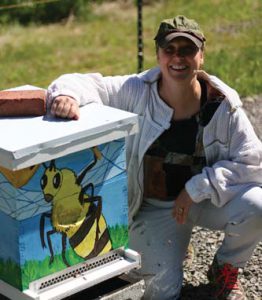
Dr. Tracy Farone
Technical Updates
By: Dr. Tracy Farone
It is mid-May here in the foothills of Pennsylvania. The locust trees are in full bloom. It looks like it will be a good year for them. “Good for the bees,” says the beekeeper voice in my head. The white-tailed deer have changed color into that beautiful reddish brown that pops out within the fresh, green backdrop of the woods. As my “barn” cat (but not really a barn cat), Sylvester, snoozes, stretched out at my feet, I just watched a doe trot away from a salt block 20 yards from my deck. I am a couple of days out from the end of the semester, time to take a breath…The last thing I want to think about is meetings, committees and the possible political acrobatics that go along with them.
I must admit I usually really hate meetings… “analysis paralysis,” pre-determined “communication,” hours of my life I will never get back, things “old” people do, and such. I have always thought it ironically funny that “committee” is the term for a gathering of vultures. But I am also appreciating the importance of voicing and hearing different perspectives on issues and how it’s extremely important in today’s world. And those that step up and serve on organizational committees are giving up their valuable time to contribute to important and ever on-going work.
As promised, I would like to give you an update and summary on a few exciting collaborations that have recently taken place and hopefully bring about positive relationships and outcomes between the beekeeping industry and veterinarians. The American Veterinary Medical Association’s (AVMA) Animal Agriculture Liaison Committee (AALC) Meeting was held at AVMA Headquarters in Schaumburg, IL May 3-4, 2023. I had the opportunity to be a “fly on the wall” at times as an alternate delegate via ZOOM for some of the meeting. The Honey Bee Health Coalition’s (HBHC) Annual Meeting in Sacramento, CA was held at the same time. Both meetings hosted veterinarians representing honey bee medicine for the FIRST time. All representatives were veterinarians also serving on the Honey Bee Veterinary Consortium (HBVC) board.
 The American Veterinary Medical Association’s (AVMA) Animal Agriculture Liaison Committee (AALC) Meeting Summary:
The American Veterinary Medical Association’s (AVMA) Animal Agriculture Liaison Committee (AALC) Meeting Summary:
I have been an alternate delegate representing honey bees on this committee for four to five months now. I am still trying to figure out the ropes, doing mostly listening (a benefit to being the alternate). I can say the committee is continually active with legislative consulting and policy considerations coming to my email box every other day. I can also say that the committee is absolutely enthralled to learn more about honey bees. As an alternate, I did not attend the meeting in person, but Dr. Terri Kane was there, near Chicago, representing. I jumped into the meeting via ZOOM when I could. Some other perspectives include those that represent veterinarians and producers in the areas of veterinary pharmacology, bovine, fish, aquatics, swine, small ruminants, sheep, public health, cattle, chickens, turkeys and the reproduction of animals, as well as government entities like the FDA and USDA.
Discussions include topics like, the Farm Bill; various drug regulation bills; protective measures for maintaining a safe food supply; humane guidelines in animal handling; policies for identifying, preventing, and controlling several current disease threats; and reports on current issues affecting each industry represented and any on-going actions in place. Our honey bee report included information on the progress made within the HBVC and multiple Colleges of Veterinary Medicine to increase honey bee related education of veterinarians and veterinary students to better serve the industry through grant projects, additional curriculum and certification programs for practicing veterinarians. I wish I could get into more detail, but I am bound by a non-disclosure agreement and a secret handshake (just kidding about the handshake). Maybe I will work on the handshake when I attend a meeting in the flesh.
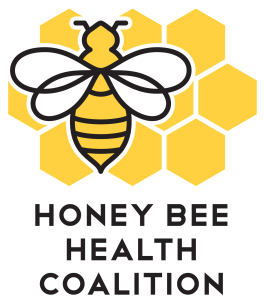 The Honey Bee Health Coalition’s (HBHC) Annual Meeting Summary:
The Honey Bee Health Coalition’s (HBHC) Annual Meeting Summary:
The stated purpose of the HBHC annual meeting is to “advance dialogue and action across workstreams in the priority areas of forage and nutrition, hive management and crop pest control.” Focuses included almond production, bee protection, The Bee Integrated Demonstration Project and building relationships within members. Drs. Kristol Stenstrom and Britteny Kyle represented veterinarians and the HBVC, a new member of the HBHC, again for the first time. Various reports were shared on the status of honey bees, pollinators and the industry from both the agricultural and conservational perspectives. Best practices and projects involving disease management, habitat management and pesticide use were working topics of discussion.
Next on the List: Euthanasia and Depopulation Procedures in Honey Bees.
The AVMA is extremely interested in learning more about recommendations and guidelines for euthanizing honey bee colonies in various situations, in the safest and most humane manner. Various situations include smaller verses larger operations, stationary hives, migratory hives, emergency de-population procedures, euthanasia for public safety reasons and euthanasia for disease mitigation reasons. AVMA recommendations and guidelines exist for nearly every type of animal that veterinarians work with, except honey bees. I have been asked to be part of a special sub-committee to consider, write up and present recommendations and guidelines to the AVMA. As we begin this work, I am open to reader’s suggestions on the topic. Oh boy… another committee, here we go!
Click Here if you listened. We’re trying to gauge interest so only one question is required; however, there is a spot for feedback!
Read along below!
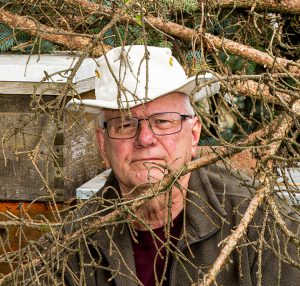 The Stark Reality of Being a Long-Term Beekeeper
The Stark Reality of Being a Long-Term Beekeeper
By: James E. Tew
Overall, beekeeping is enjoyable – but it’s not always easy
Readers, in several previous articles, I have danced to this tune with you. Yet, for personal reasons, I feel a need to try again. Though many of us feel it, it’s not easy to explain what we feel about our bee efforts. I am an entomologist and I do not have a deep background in human psychological issues. Clearly, I should stick with what I know, but sometimes I just need to write about what I feel. Even so, I struggle to word it for you. My core thought is – Though beekeeping is generally rewarding (After consideration, I have opted to use the word “rewarding” rather than the word “enjoyable.” Cleaning dead-outs is not enjoyable, but as I prepare the fouled equipment for future use, I feel rewarded.), it’s not always easy.
I’ve done this bee thing for a long time
Having a long history in keeping bees is a helpful attribute for any beekeeper. You remember “when” and you acquire a lot of personal bee-related stories. You learn a lot.
Through the years, I have learned that my bee interests will cool a bit during Winter months. So, I adapt to that reality. During those cold, quiet periods, I read about bees, or I write perfunctory articles about understanding more about our craft. I assemble or repair equipment. I plan for the next season. I just try to stay busy in my craft during this down time. While it is a useful time, this quiet period cannot be called true beekeeping. Rather, those times are “preparing for actual beekeeping.” Try as I might, my bee interest drops to a lower ebb during these slack periods. How could it not?
From experience acquired during many previous quiet Winters, I know this bee-related seasonal feeling is coming. I expect it. It’s a normal part of my beekeeping psyche. I also know that when Spring comes around, I will – just like my bees – once again awaken and heat back to a higher level of beekeeping interest. In my earlier years, I don’t recall a mentor telling me that my bee interest would naturally rise and fall – usually based on the passing of annual seasons.
Building a fire
Successful beekeeping is much like building a glowing bonfire. Fuel must be accumulated. Dates are set. A location is selected. All is made ready. The fire is ignited, it starts slowly and, as more fuel is added, it steadily grows until it reaches its capacity. Then, invariably, it begins to ebb. Without more fuel and tending, it will die out and extinguish. Interest in beekeeping is much like building a fire. It waxes and wanes. Unfortunately, for some of us, the fire goes out. The good news is that the fire can be rebuilt.
In the May 2023 issue of this magazine, I broached some of the feelings that I have about beeyards that I have now vacated. That was one of my most recent efforts to write about beekeeping feelings.
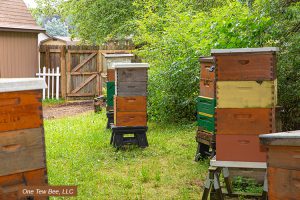
Figure 1. Part of my beeyard in better times.
In that piece, I described the upcoming fate of my oldest yard – my home yard – and how I will need to adapt to having new, near neighbors and a new street abutting my beeyard. I covered my feelings about that issue in my writings for that month. All things change, don’t they?
Then came the wind storm
In early April 2023, a significant wind storm, lasting three days, blew through my area. Trees and apiary damage was all about me. My bee equipment was scattered helter-skelter. On two consecutive stormy days, I had a fifty-five-year-old Colorado Spruce come down. These trees abounded my apiary.
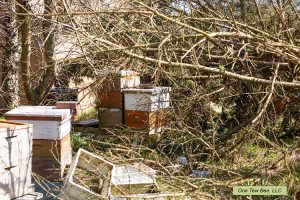
Figure 2. It is not easy working these hives.
On one hand, I can’t complain too much. One tree fell away from my beeyard while the other precisely fell in the only place it could to cause the least damage. I still had three colonies that were crushed. The high wind apparently blew the bees away. There were only a few remaining bees in those obliterated colonies. They did not survive. However, the damage could have been worse. On one hand, that’s the good news. On the other hand, I now have a huge tree down in the middle of my home yard and I have bee equipment either destroyed or scattered throughout my yard. (You must know that I will not be giving any tours of my beeyard any time soon.)
What a mess
I confess that I feel overwhelmed at the prospect of clearing this chaos. I suppose I will select equipment that is still usable, or can be made usable, and form a burn pile for the remainder. But it gets even better. In the middle of all this confusion, I must move the living colonies from the area. Here’s why.
The tree removal people
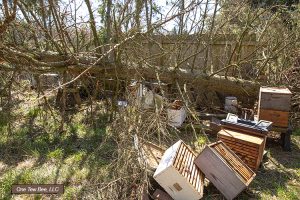
Figure 3. Part of my beeyard challenge.
I had tree removal people come to view the situation. Being professional arborists, I had hoped they would be reasonably comfortable around flying, confused bees. That did not happen! As the tree company representative reviewed the scene – and the bees – from the blue, he asked, “If the bees are a problem, do you mind if we spray them?” Readers, I was truly astounded. I think that I probably gasped. Again, I must write that I was stunned. Within that scenario, I would have even more dead bees and a new category of mess. Now I would also have pesticide contaminated equipment to deal with. After a few seconds, I was able to form sentences and was able to tell this uninformed guy that, “No, I will move these hives to a distant location so his workers could go about their business of tree removal.”
Much like the old late night TV commercials, I now tell you, “But wait, there’s more!” Probably sensing that he had just mightily offended me, he tried to rebound by showing feigned interest in bees. He asked, “There’s a queen in that box and the bees surround her – right?” I felt as though I was having some kind of medical exam. I just wanted this whole encounter to be over. I responded that he was somewhat correct but having NO interest in trying to teach beekeeping, I immediately returned the problem of the downed trees. He gave me a fair price and left to attend to my neighbor’s downed trees.
This was all a new and unfamiliar reality, being a long-term beekeeper. I have never had my apiary so discombobulated. Then in addition, having people so unfamiliar with bees be so intimately associated with my colonies and with my stressed psyche was a new learning experience for this old beekeeper.
I’m still learning
As I have worked to clean and reorganize my apiary site, I have clearly learned that having a large coniferous tree in the very middle of your apiary is not a positive beeyard feature. As a younger man, I would have fired up my chain saw and removed some of the barrier to my bees. I’m not a young man and I am paying a professional company to clear the mess. Let them earn their money has been my feeling. So, I have been trying to work around the big tree as I gather equipment and rearrange bee hives.
I wear high-quality ventilated bee suits. As if to make bad things worse, the needles on the dead tree grab my bee suit and puncture me. At first it was surprising, then it was frustrating, but the stabbing and sticking progressed to being outright annoying. I can hardly move in my apiary without my suit being grabbed by prickly needles that are strong and determined.
But wait, there’s even more!
You recall that I have other issues beyond the downed trees. Remember that I will be having new neighbors located near my beeyard. With this reality in mind, last Spring, I had what I originally thought was a genius idea. I will allow Multiflora Rose, an invasive plant, grow to form an impenetrable barrier between me and my new neighbors. After all, that was the original intent of introducing this obnoxious plant into this country. It was to be a hedgerow plant. Unfortunately, the plant went derelict and is now nearly uncontrollable.
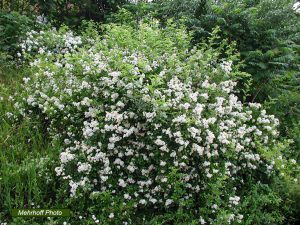
Figure 4. Multiflora Rose in full bloom. Photo credit: Leslie J. Mehroff, University of Connecticut
Multiflora Rose and ventilated bee suits
Being otherwise cut back, this mega-prickly plant now grows at the edges of my beeyard, but in the storm, confusion and destruction, the unwelcome plant has also been upset. Its tentacles reach here and there and, in some cases, snakes through the branches of the downed tree. As bad as it is to have pine needles grabbing my bee suit, Multiflora Rose is profoundly worse.
It is as though the plant is alive. In snake-like fashion, it grabs my suit and dearly holds onto me. I literally rip it off only to have it whip back and grab me again. On two occasions, I had to remove my suit to get the vine detached from my suit. I must wear bee gloves to deal with the thorny plant, not for protection from bees. I can only candidly write that this is not an enjoyable episode in my beekeeping journey.
The stark reality of being a long-term beekeeper
This month, I will be seventy-five years old and I will have been keeping bees for fifty consecutive years. Yet, I am essentially starting over again in my home yard. I’m either impressively dedicated or a very slow learner.
As traumatizing as it has been for me, I have begun to accept the reality that my most personal beeyard was going to change anyway. I was preparing to deal with that reality. Now, part of my tree barrier has vanished. Even more changes are coming.
While trying to make lemonade from lemons within this fallen tree situation, I admit that, in a bizarre way, the trees coming down will assist in additional future fencing that I would be needing anyway. I have already been forced to relocate the remaining colonies to another temporary location. I was going to need to do that task later this Summer anyway.
For the first time in more than forty-five years, I will (temporarily) not have any hives at this location. The yard will essentially be wide open. No trees, no bees and heavy construction nearby. I have a rare window to completely restructure my core yard into a “new and improved” location. I plan to electrify my little bee storage barn and install cameras for security and observational purposes. So, is this a disaster or an opportunity?
Yet another reality of beekeeping
Several of my local beekeeping friends have offered to help, but so far, I have politely declined their offer. Why? Because of “feelings.” These are my bees and they are my responsibility. If I can’t do the job, then I shouldn’t take on the job. For reasons beyond my comprehension, I’m on a lifelong apicultural journey and it’s my thing. I should not seek help from others for the occasional distasteful aspects of my journey in order for me to be able to enjoy the positive aspects of my journey. No doubt, I will get back to you if any of this situation changes in even more unexpected ways.
My lifelong good friend once said…
I once had a lifelong professional friend tell me that I only wrote “disaster” articles. It was a passing comment that he made in jest that I have never forgotten. In fact, I do write about stressful beekeeping events because, to me, those are the events, the episodes, that make me grow in my chosen craft. These trying episodes give me unwanted depth and forced understanding. Also, my trying experiences make me compassionate when other beekeepers tell me of their issues and concerns. Therefore, in this article, I choose to use the word, reality rather than disaster.
I will clean this situation up and I will reestablish colonies in my home yard. It will take a lot of work that is not particularly enjoyable and it will require me to take a lot of naps. It’s beekeeping. Overall, I enjoy parts of it immensely.
 Dr. James E. Tew
Dr. James E. Tew
Emeritus Faculty, Entomology
The Ohio State University
[email protected]
Co-Host, Honey Bee
Obscura Podcast
www.honeybeeobscura.com

